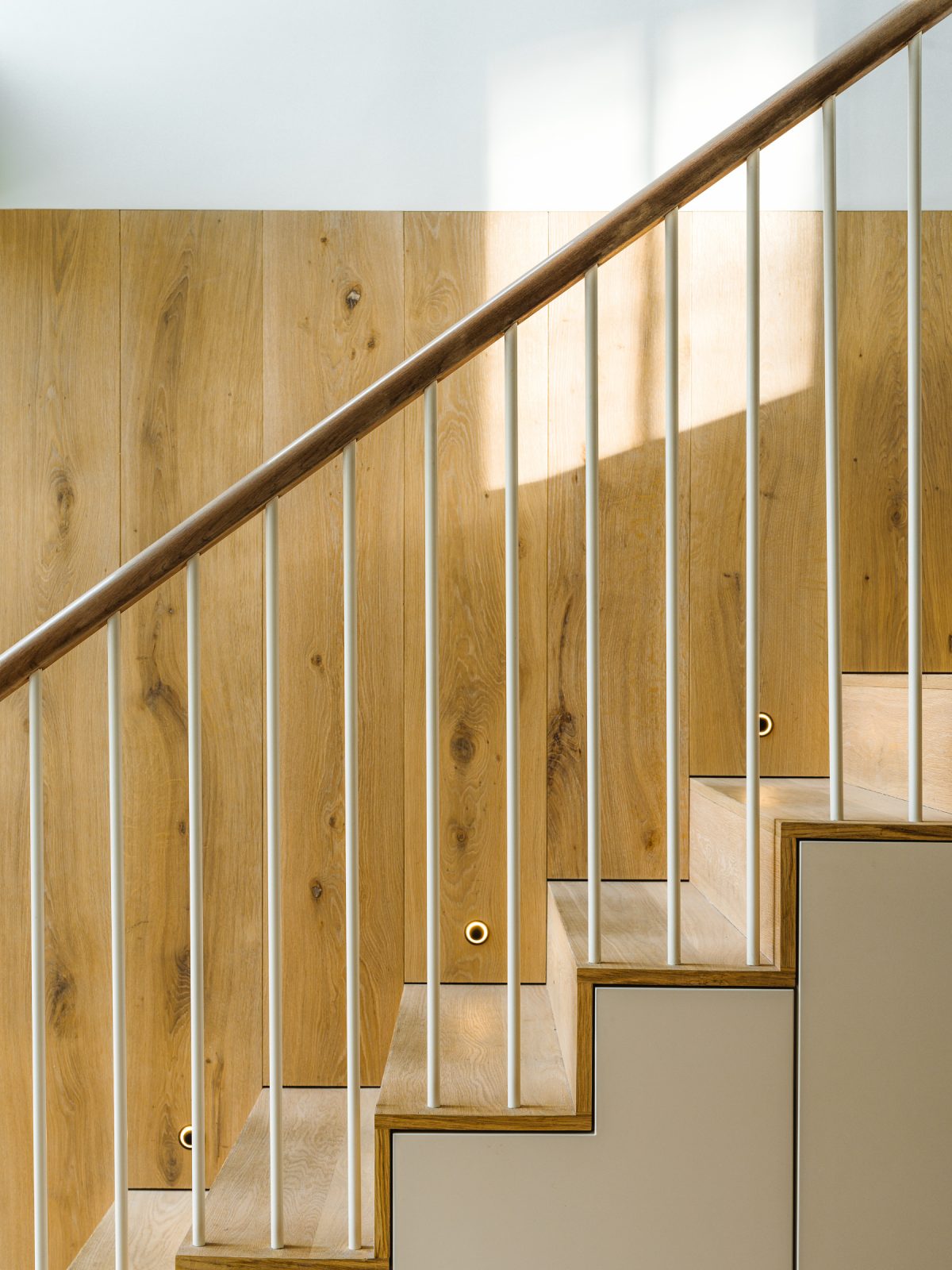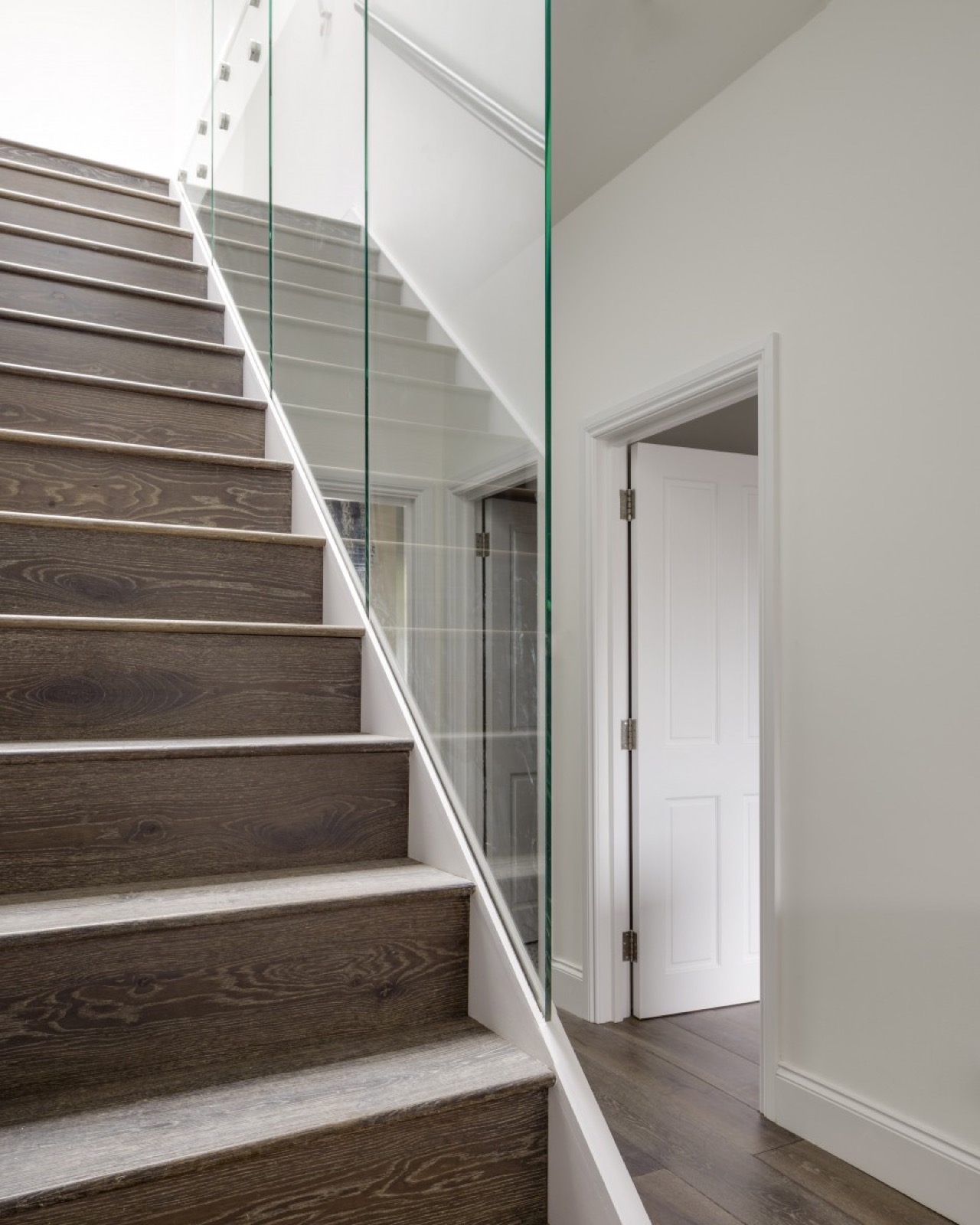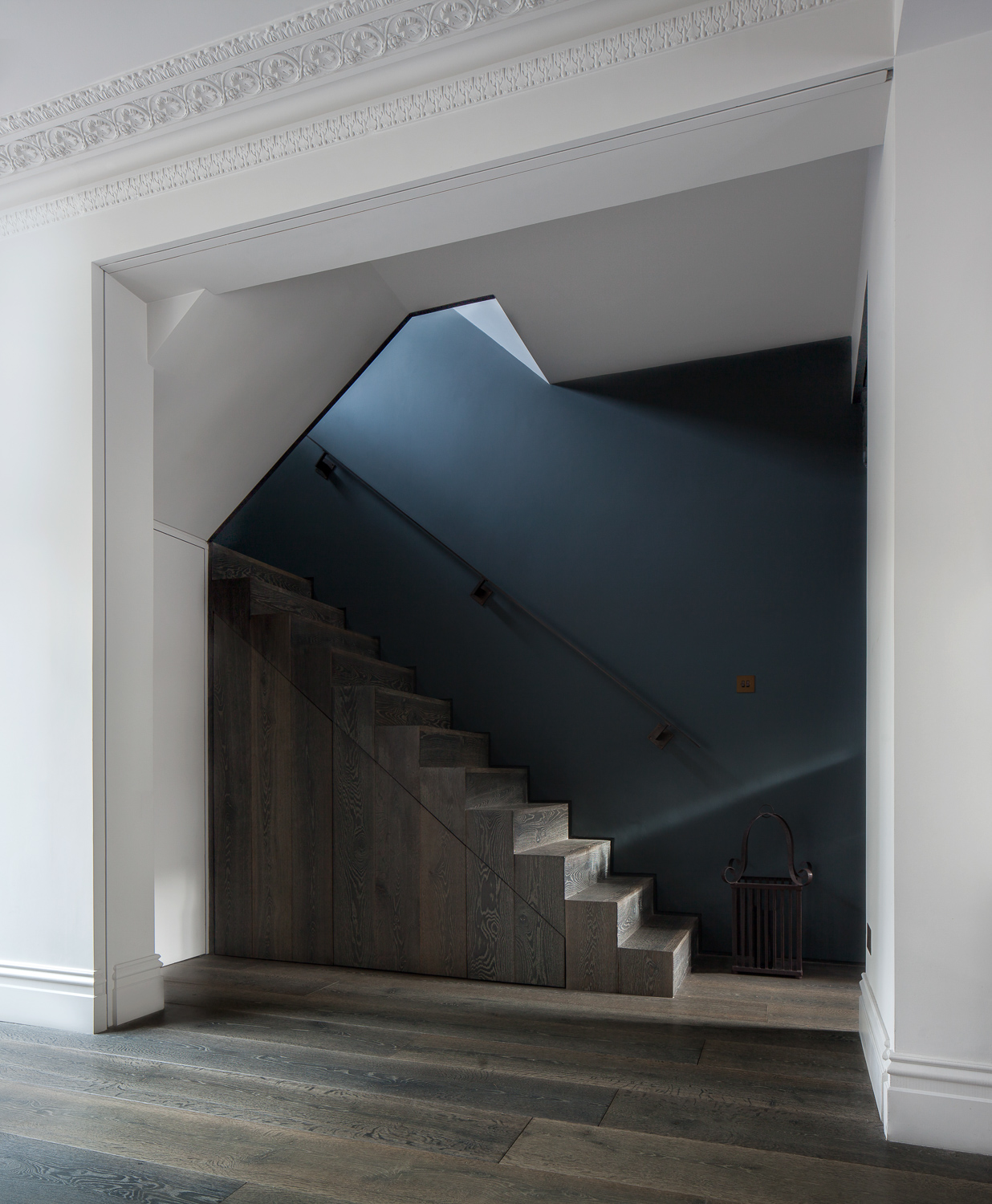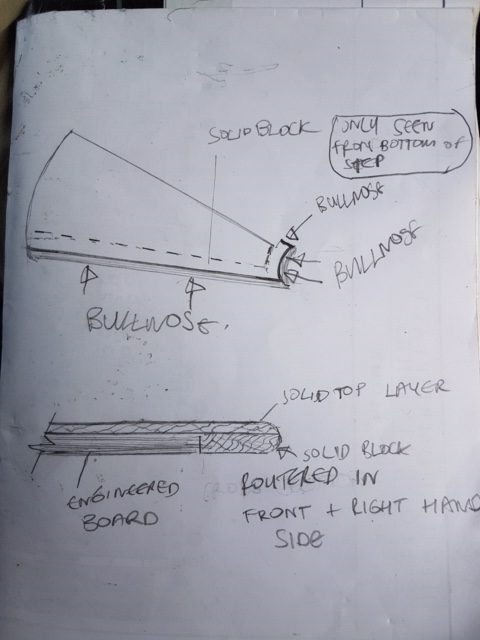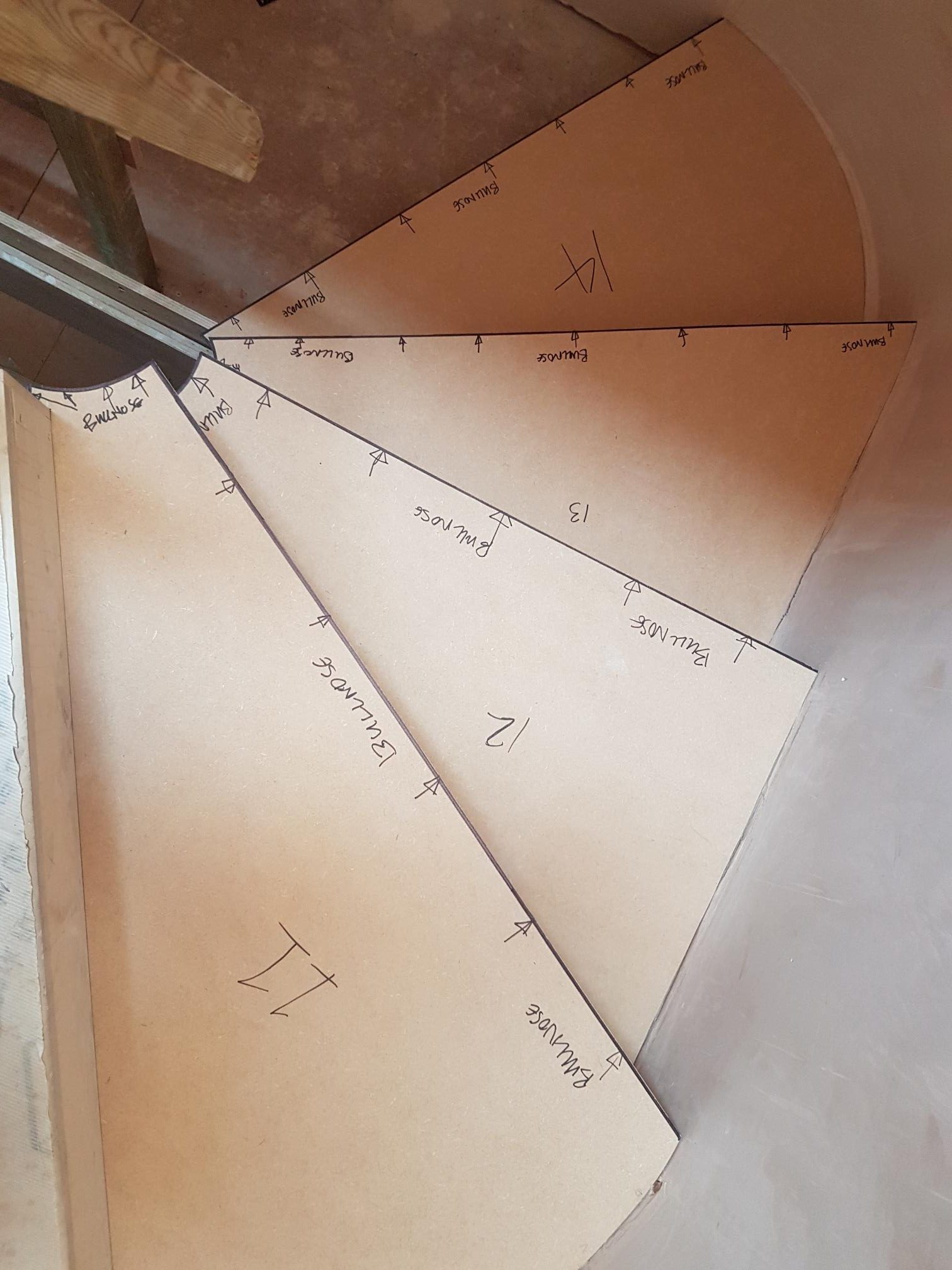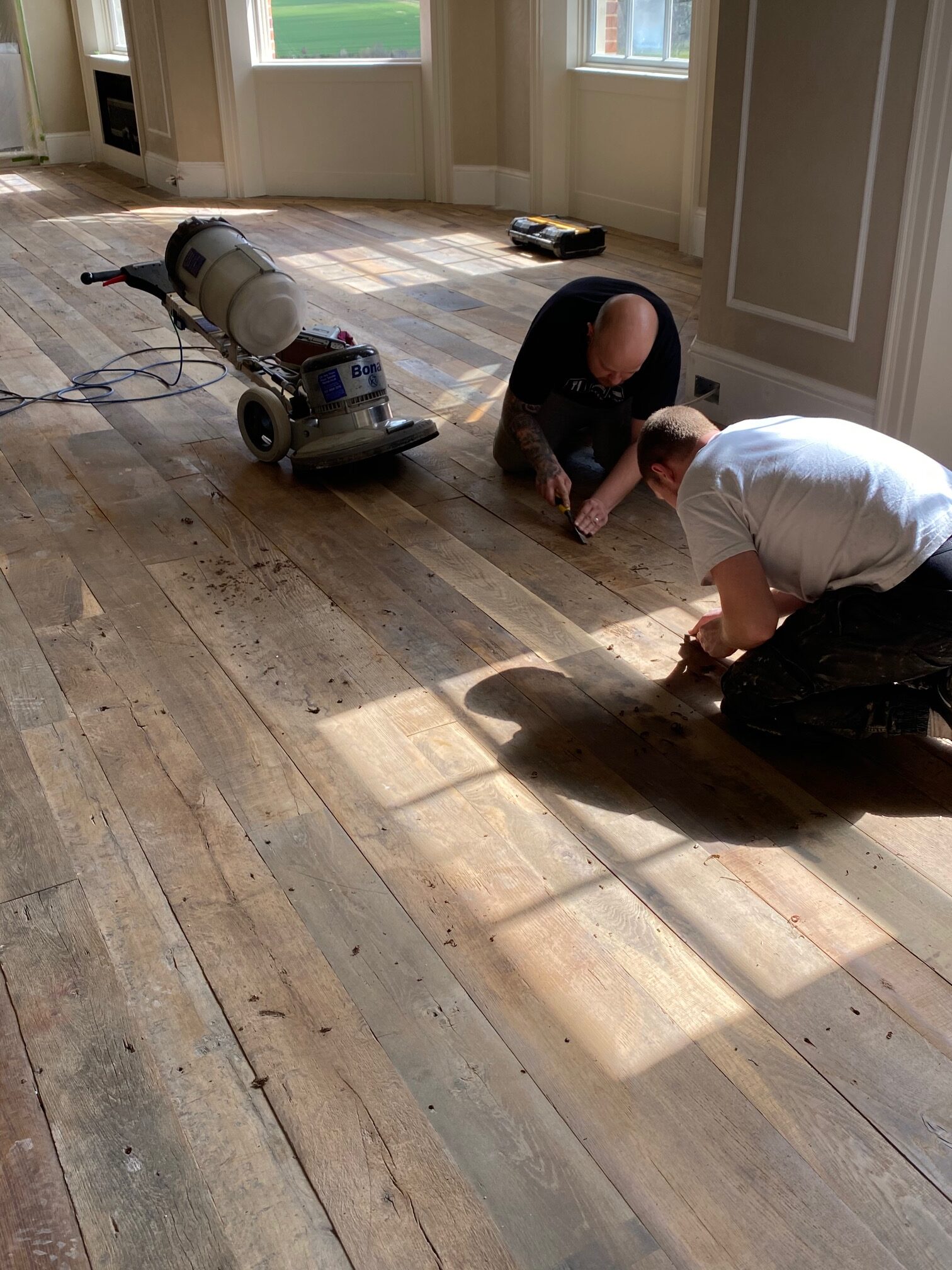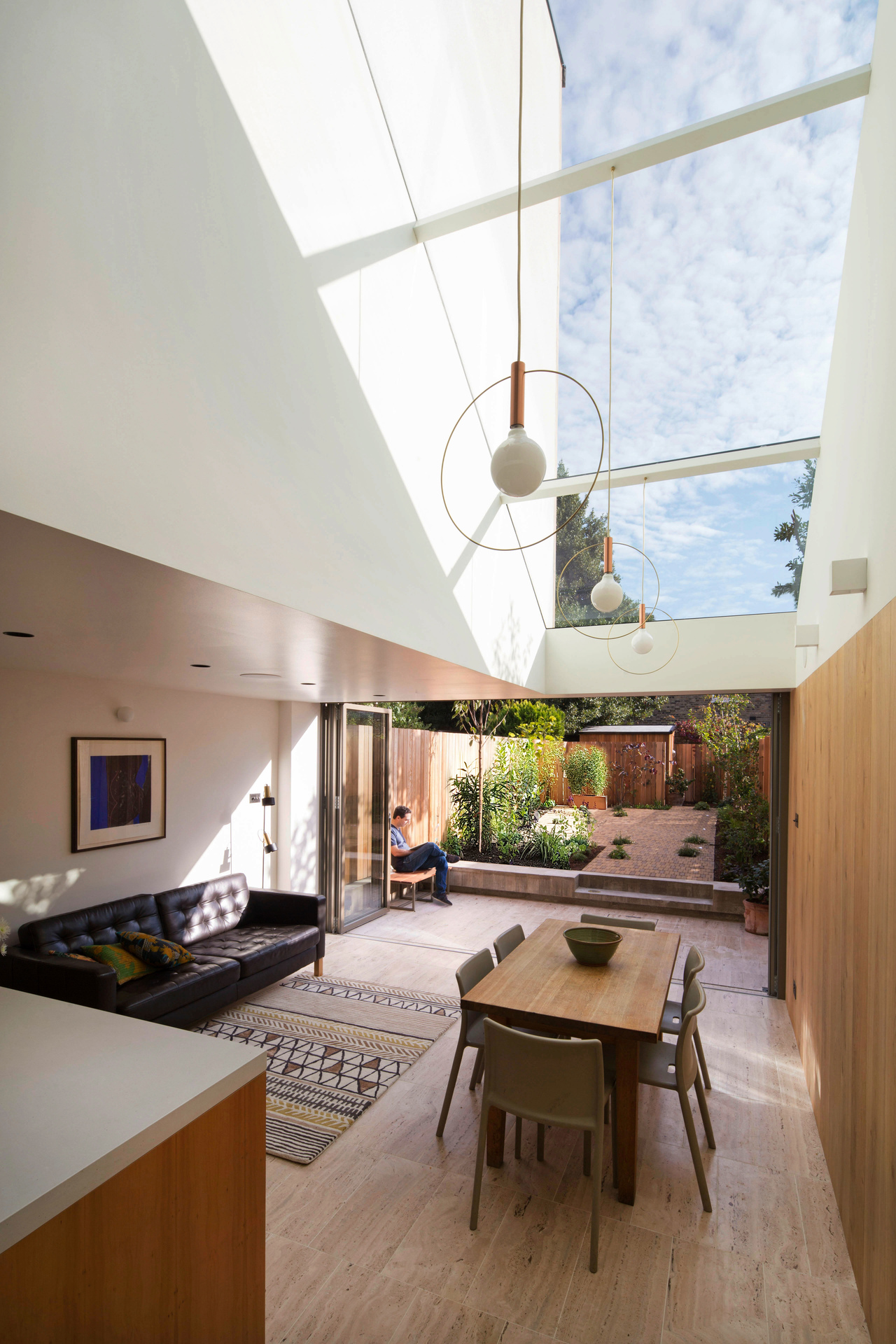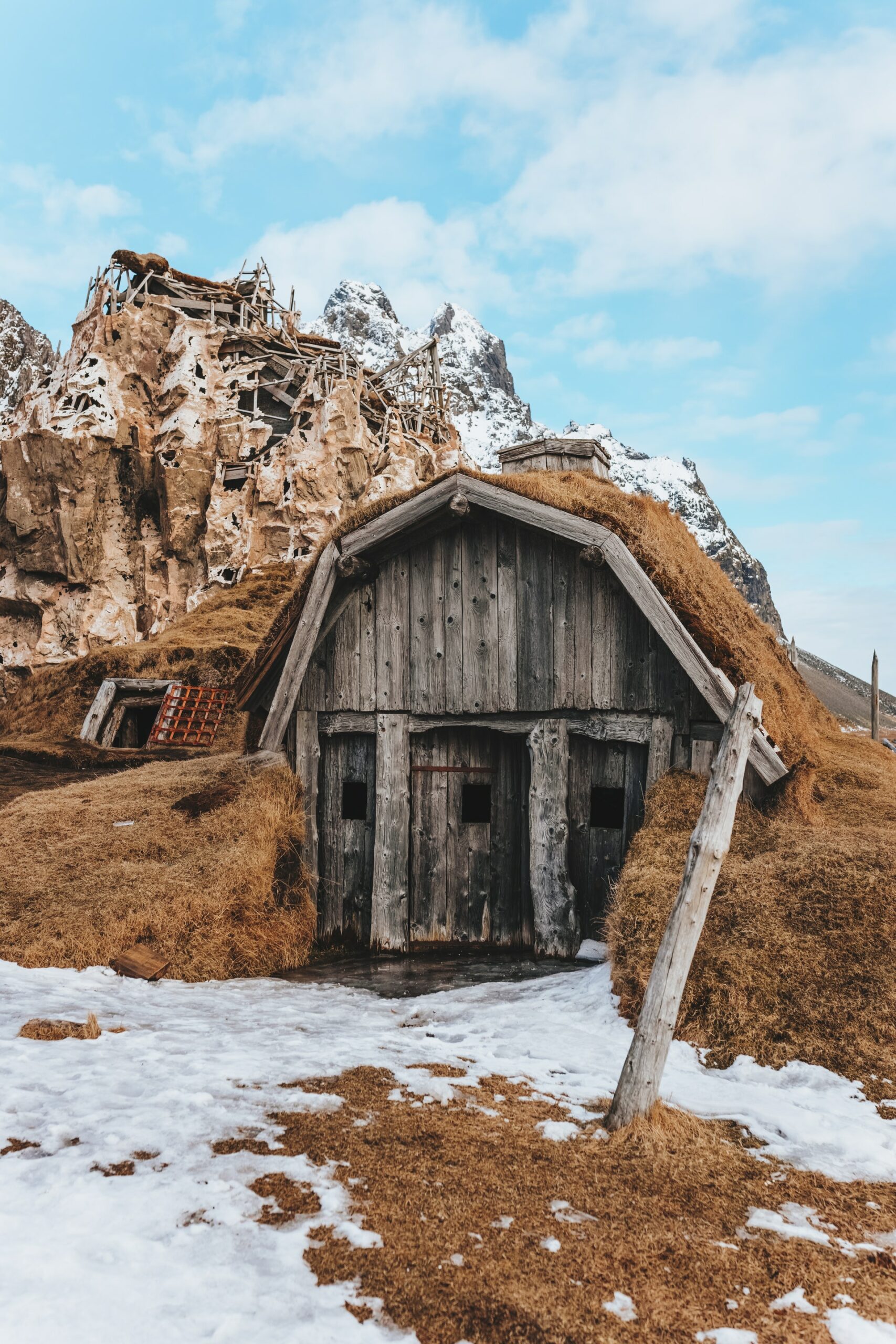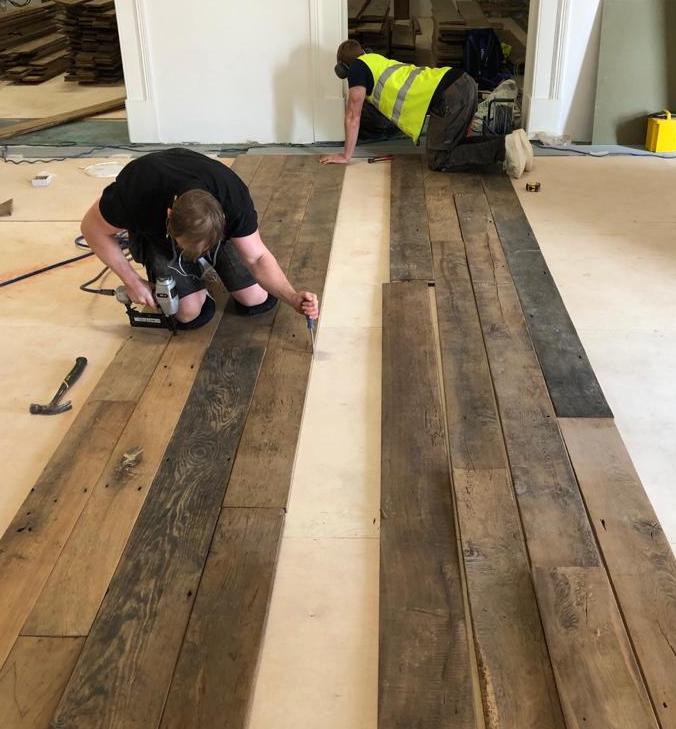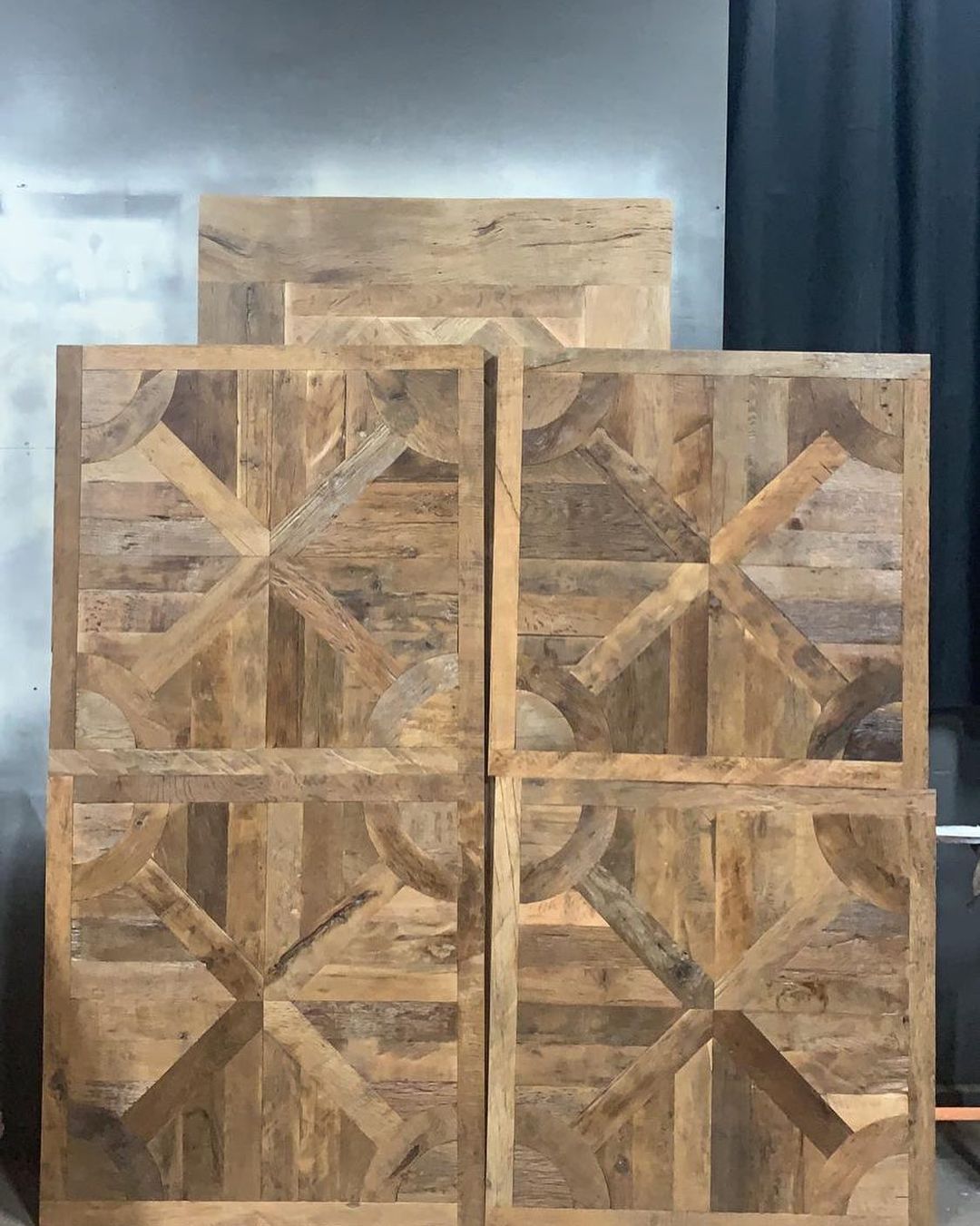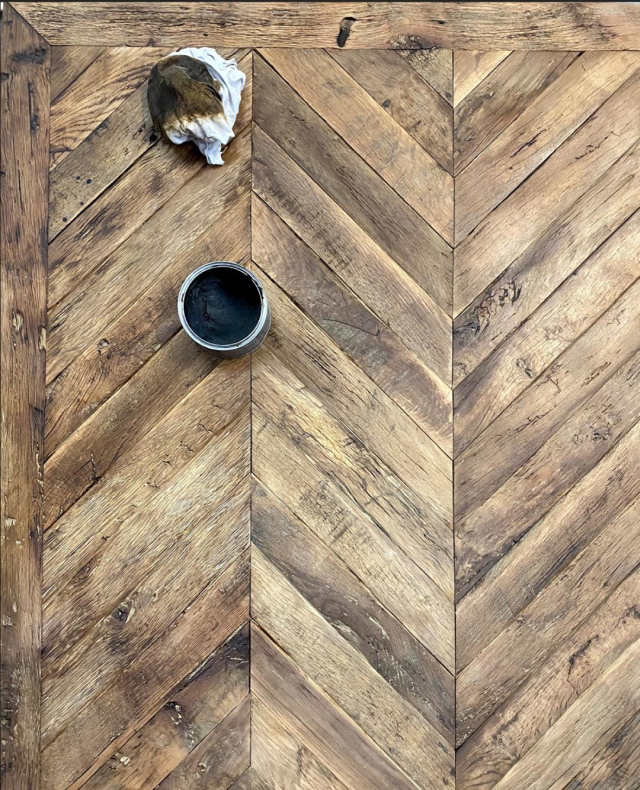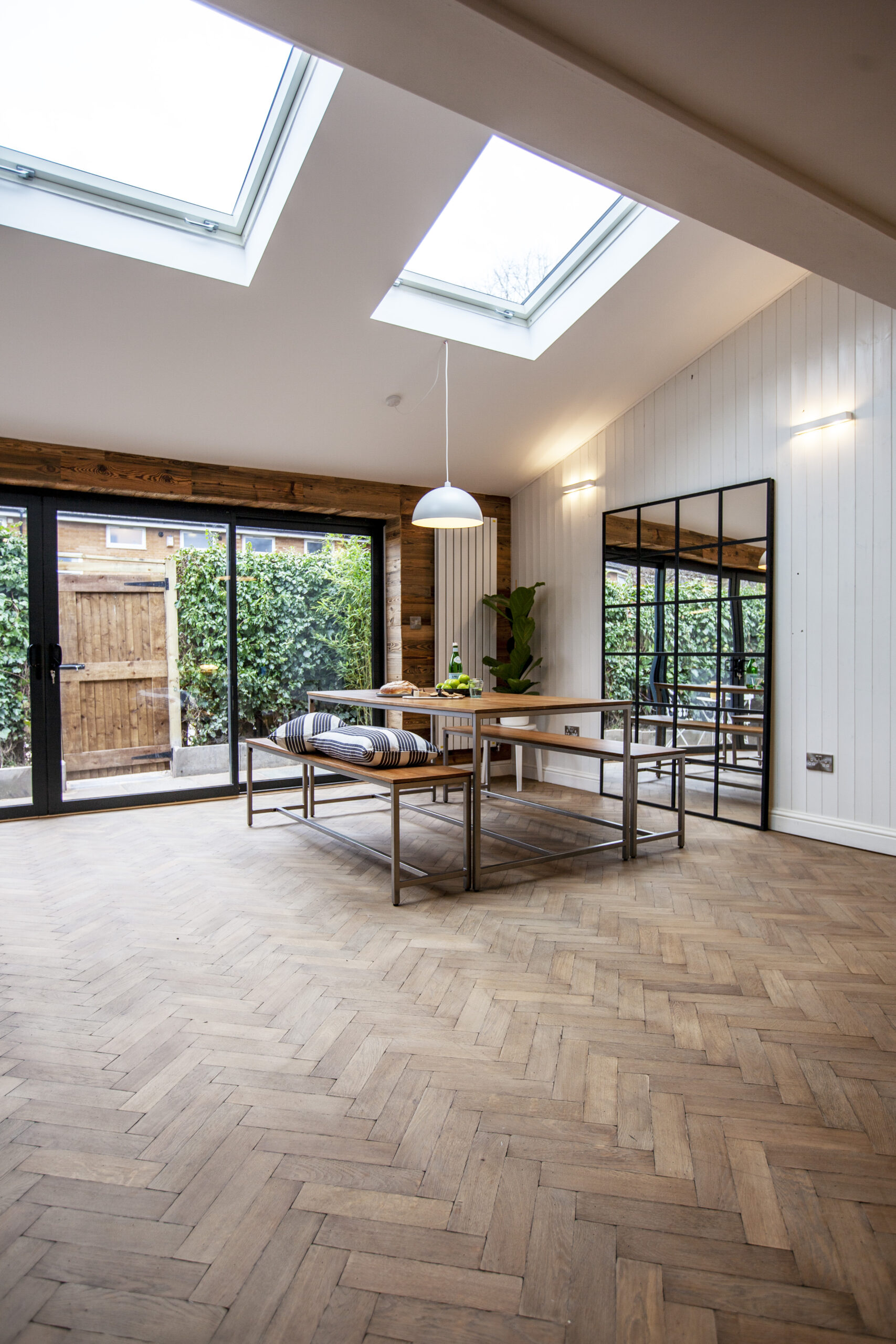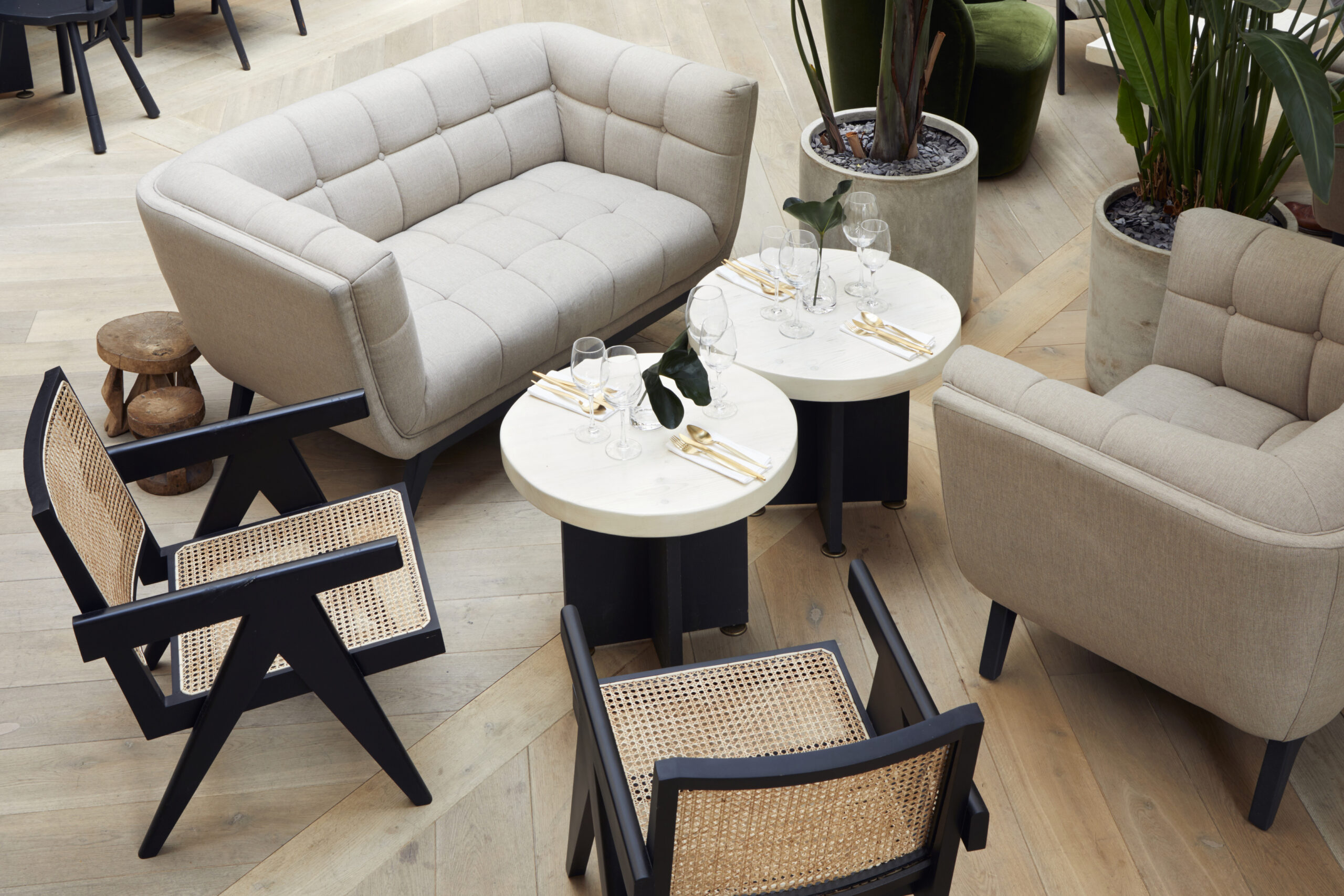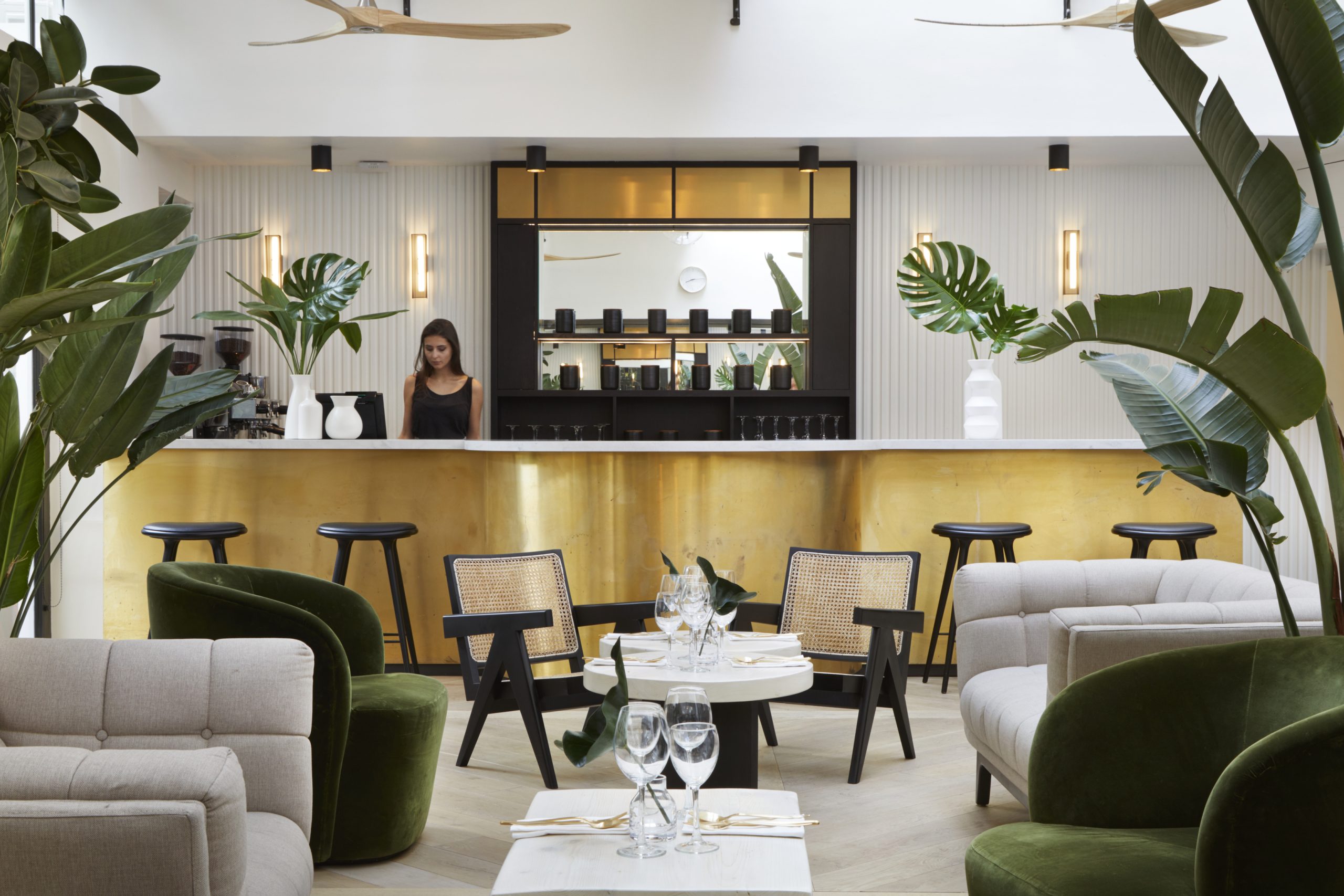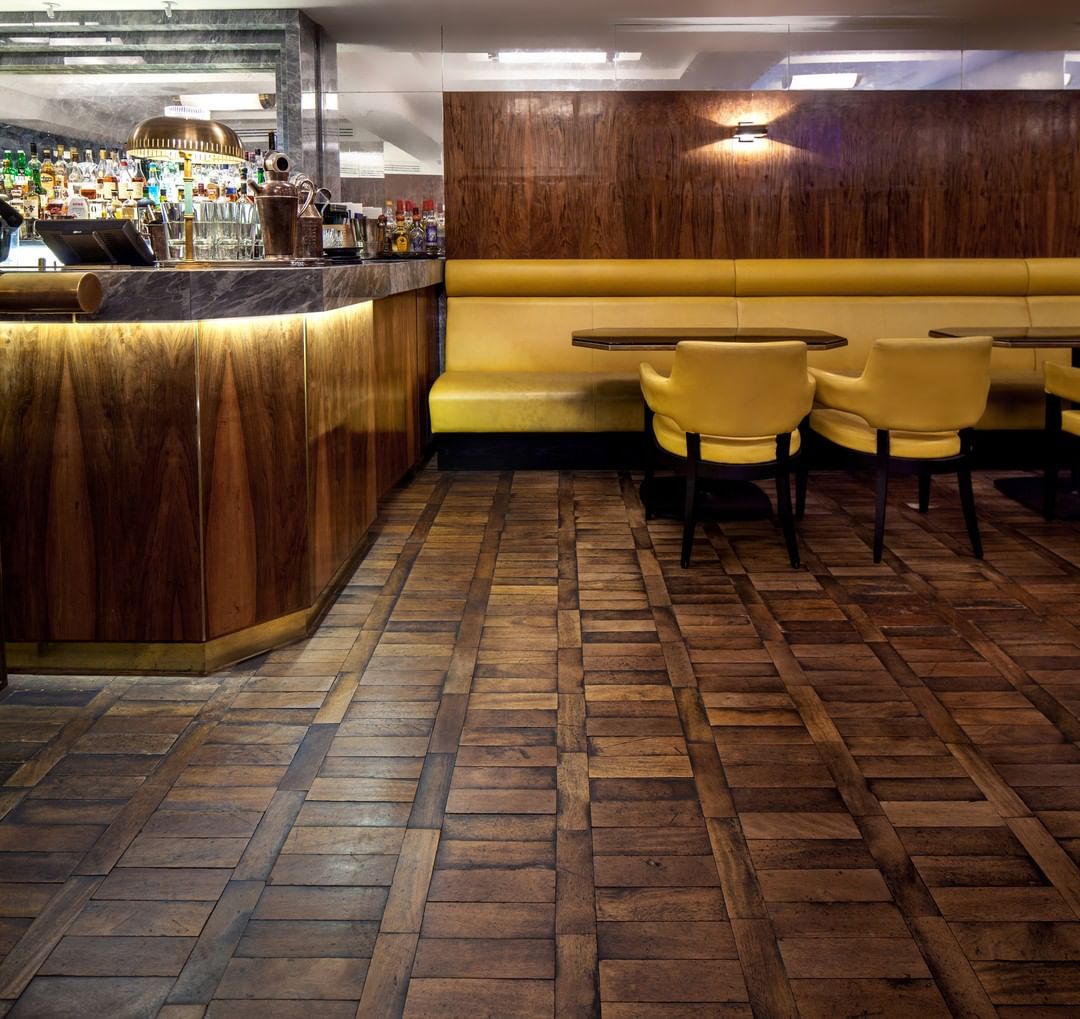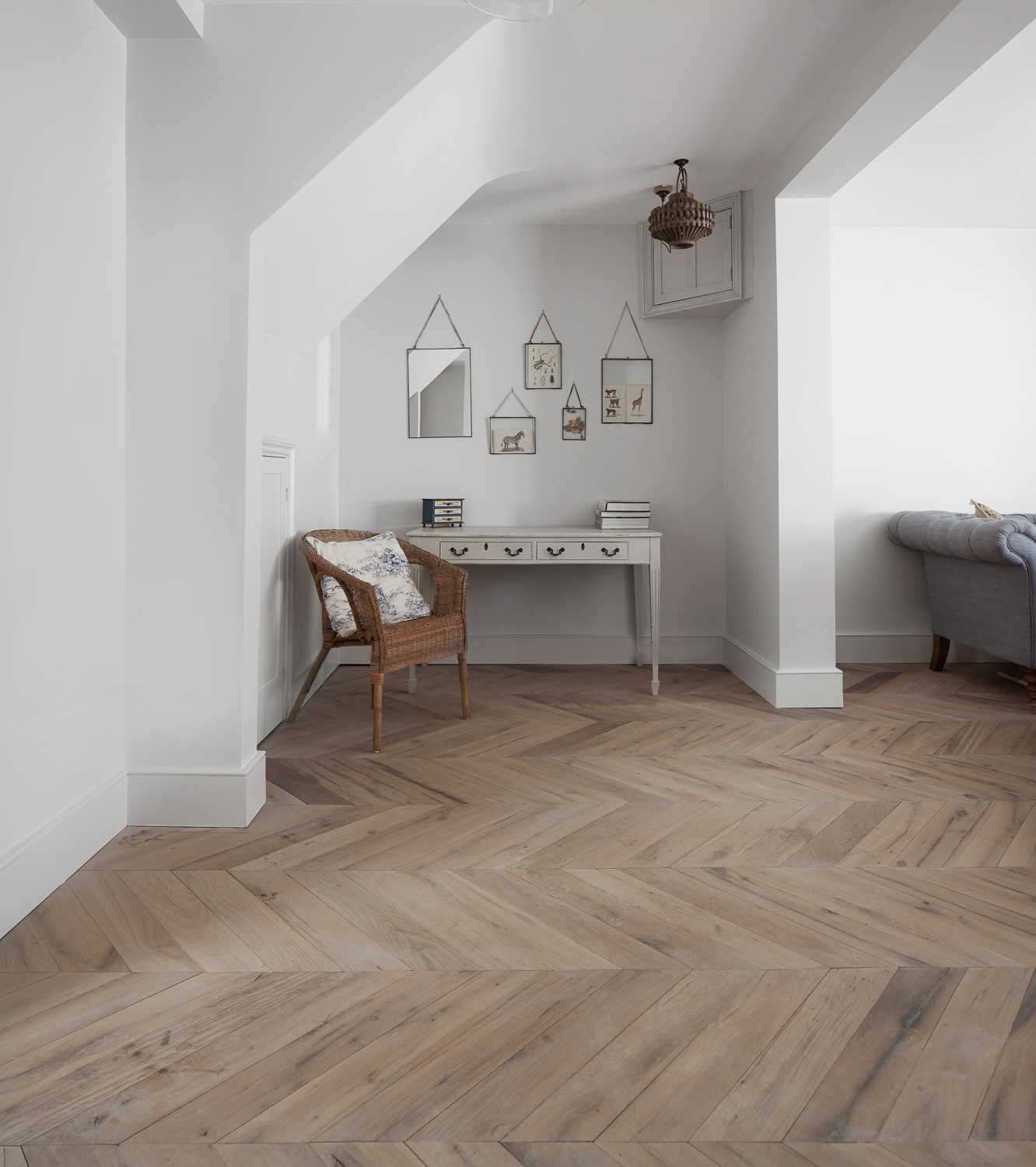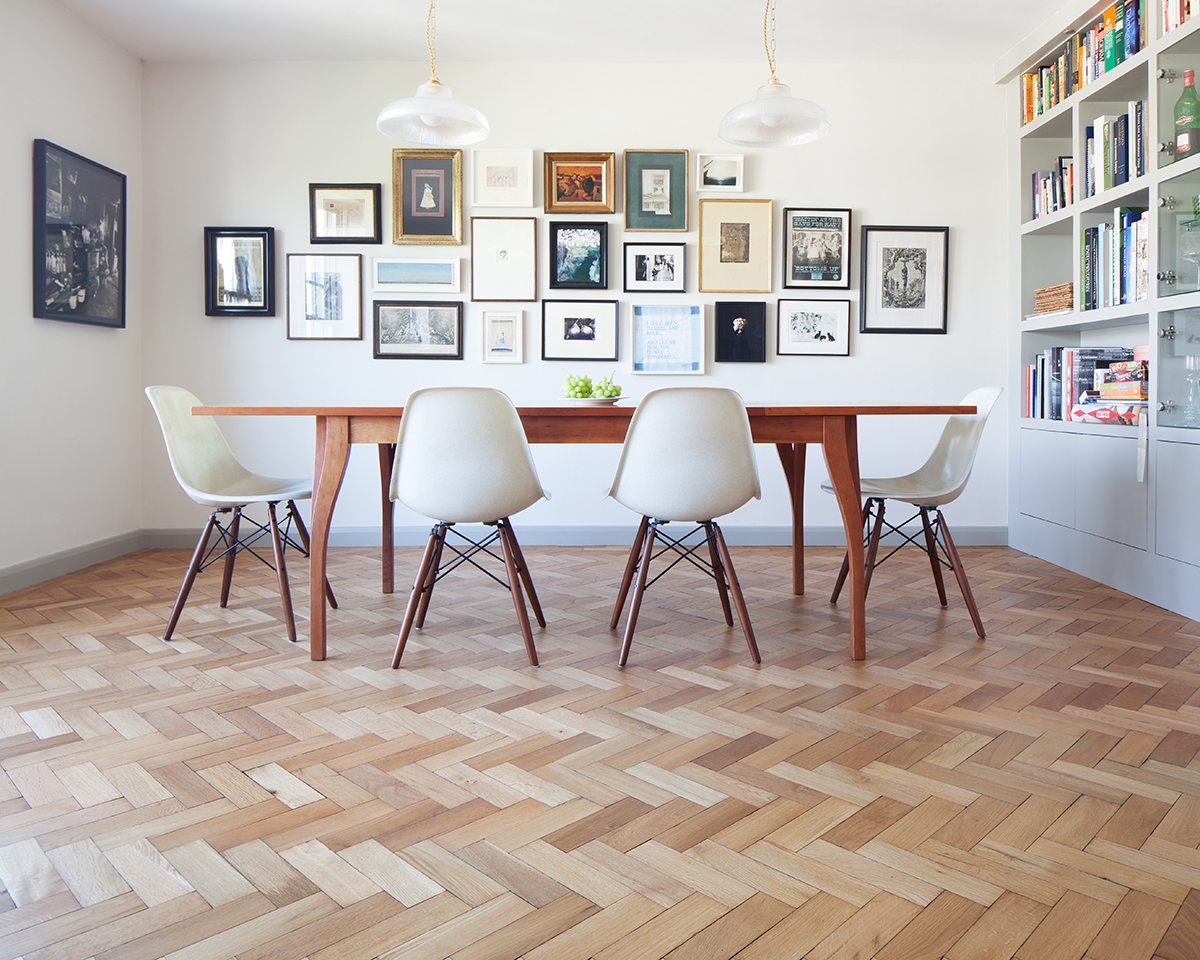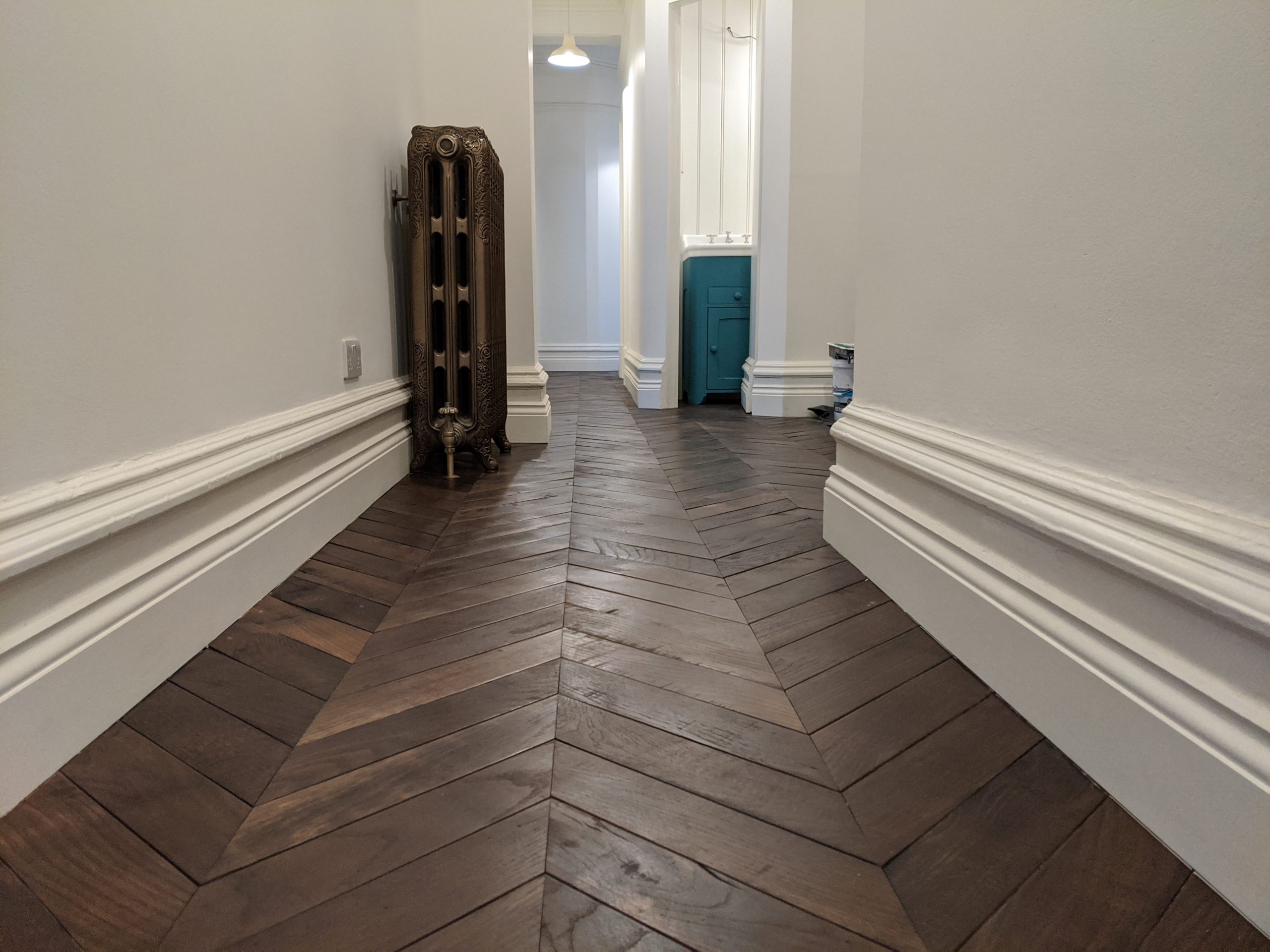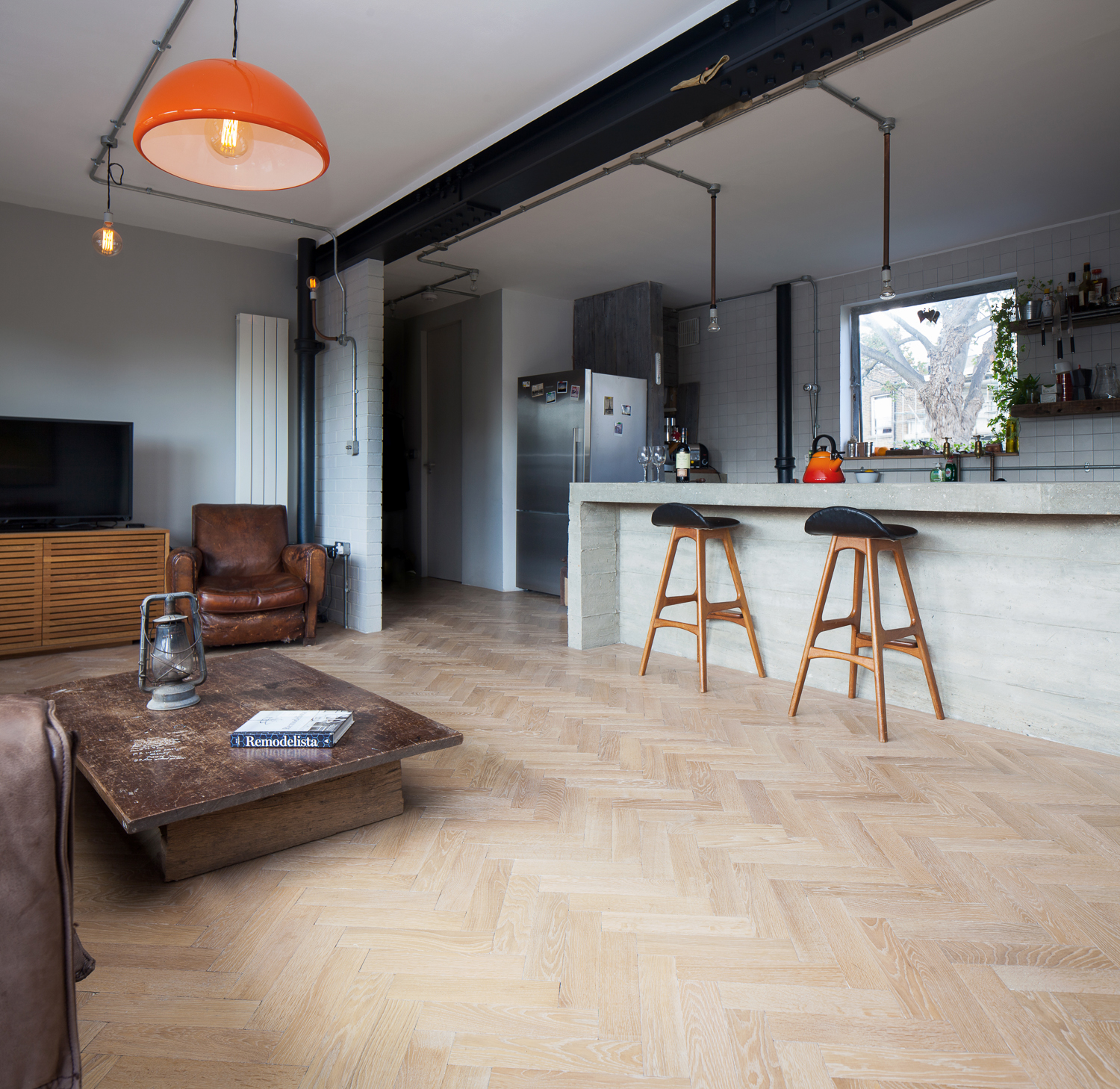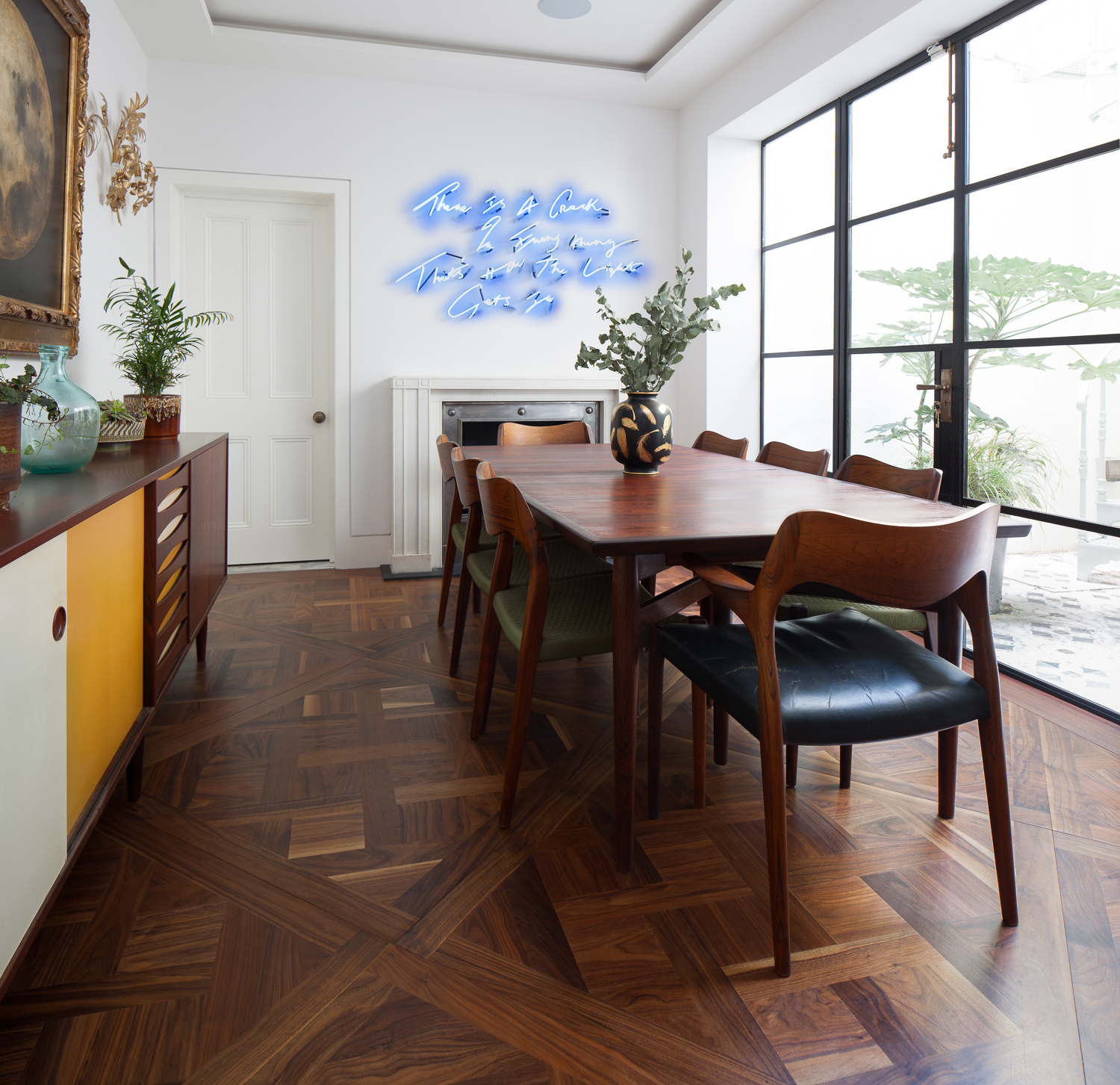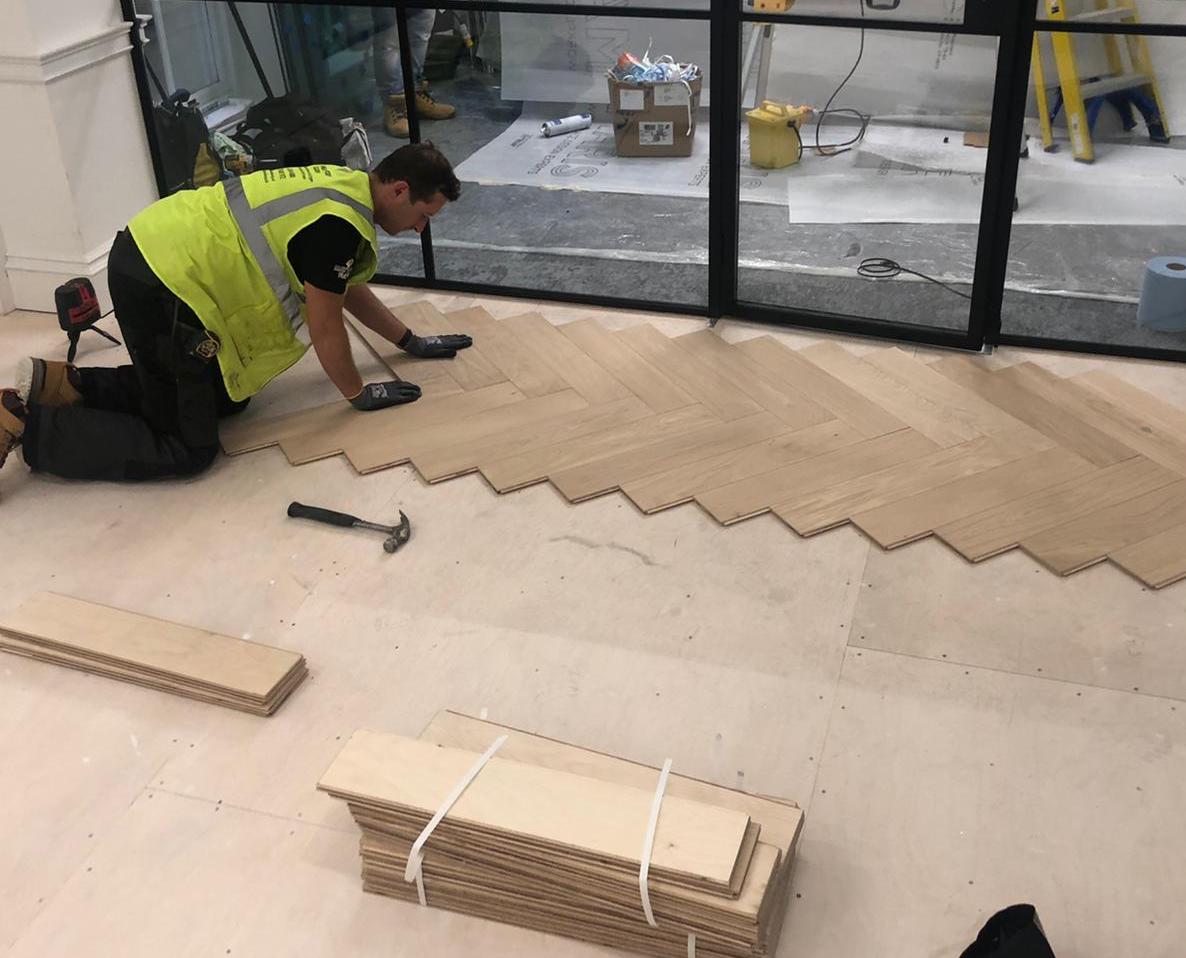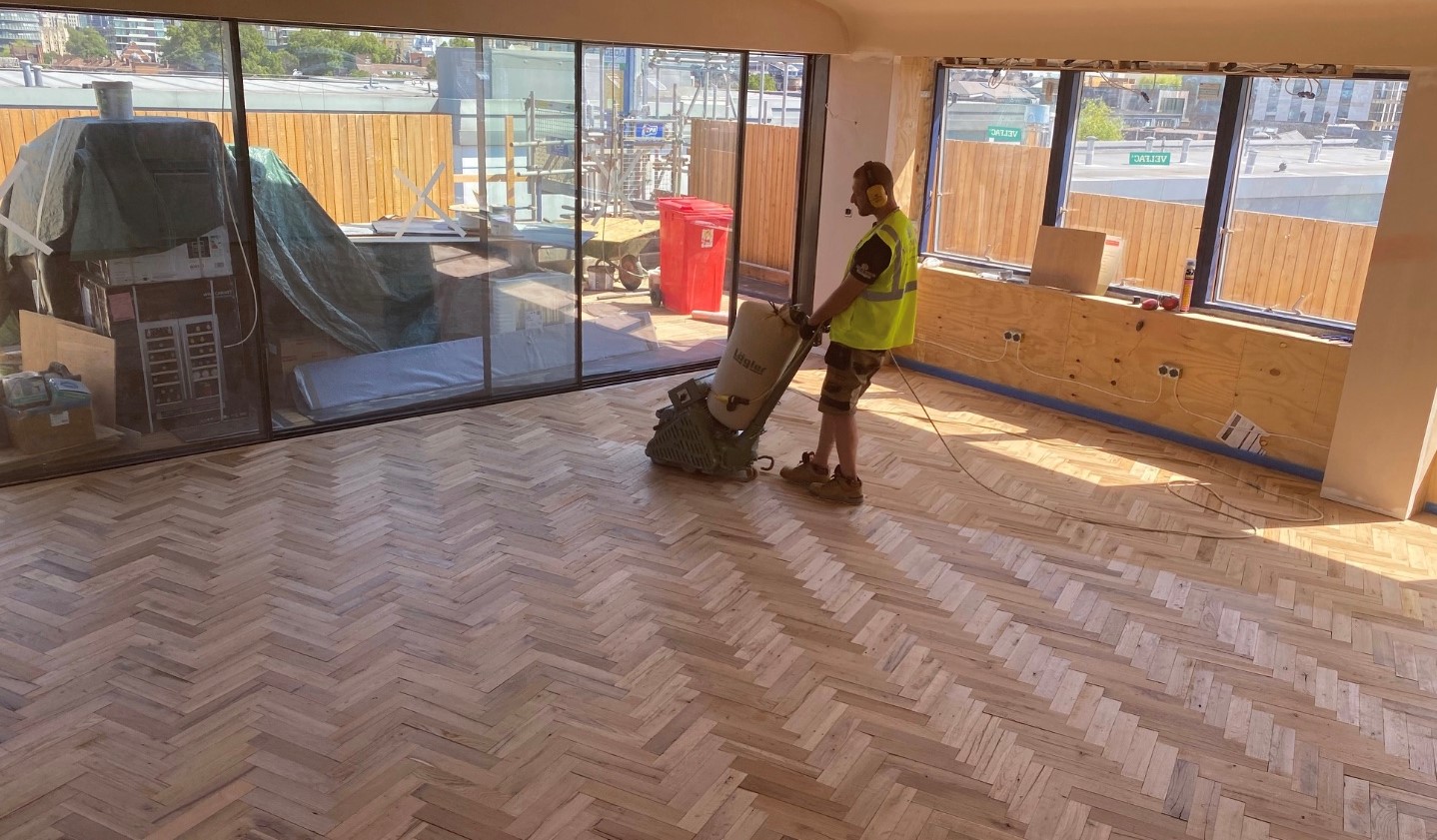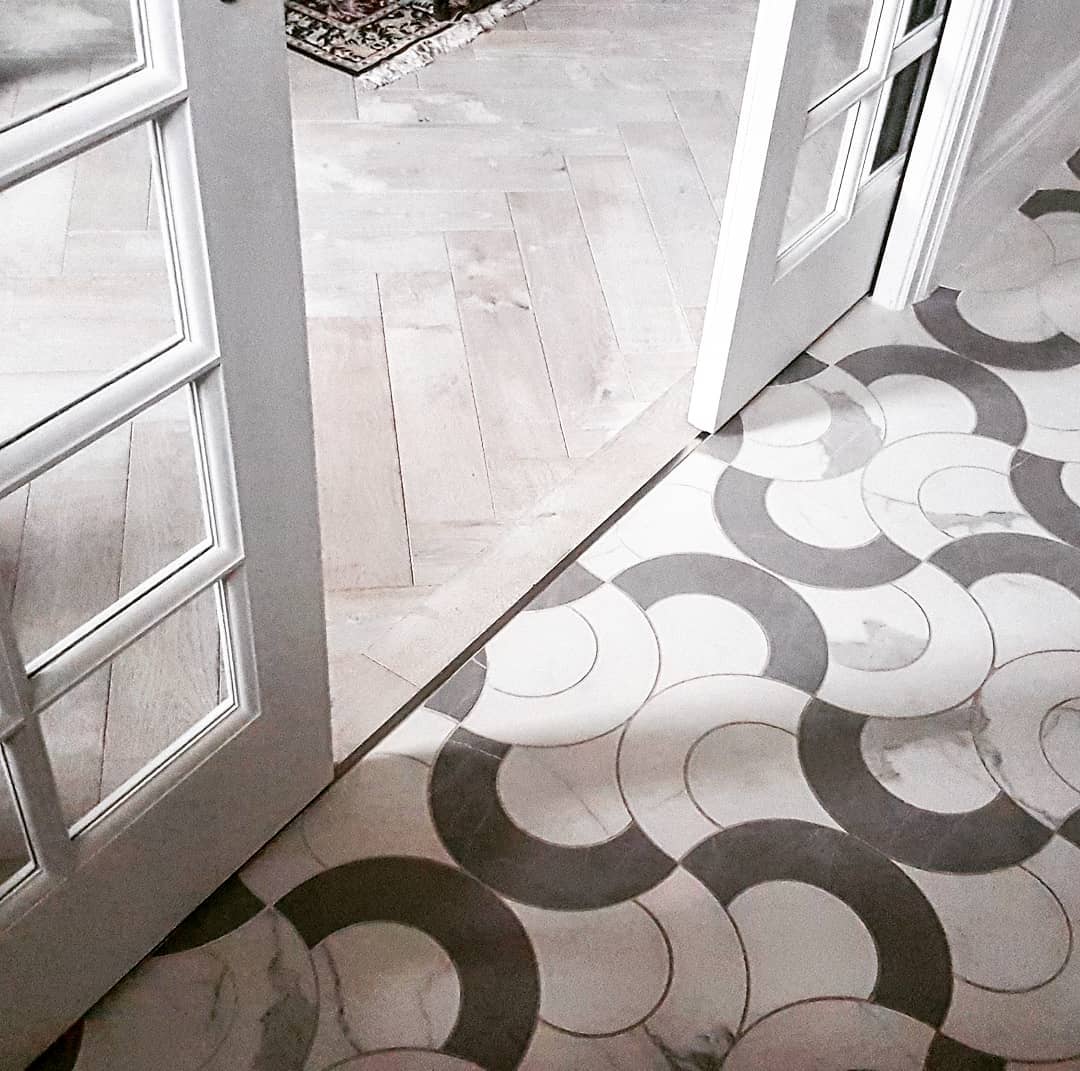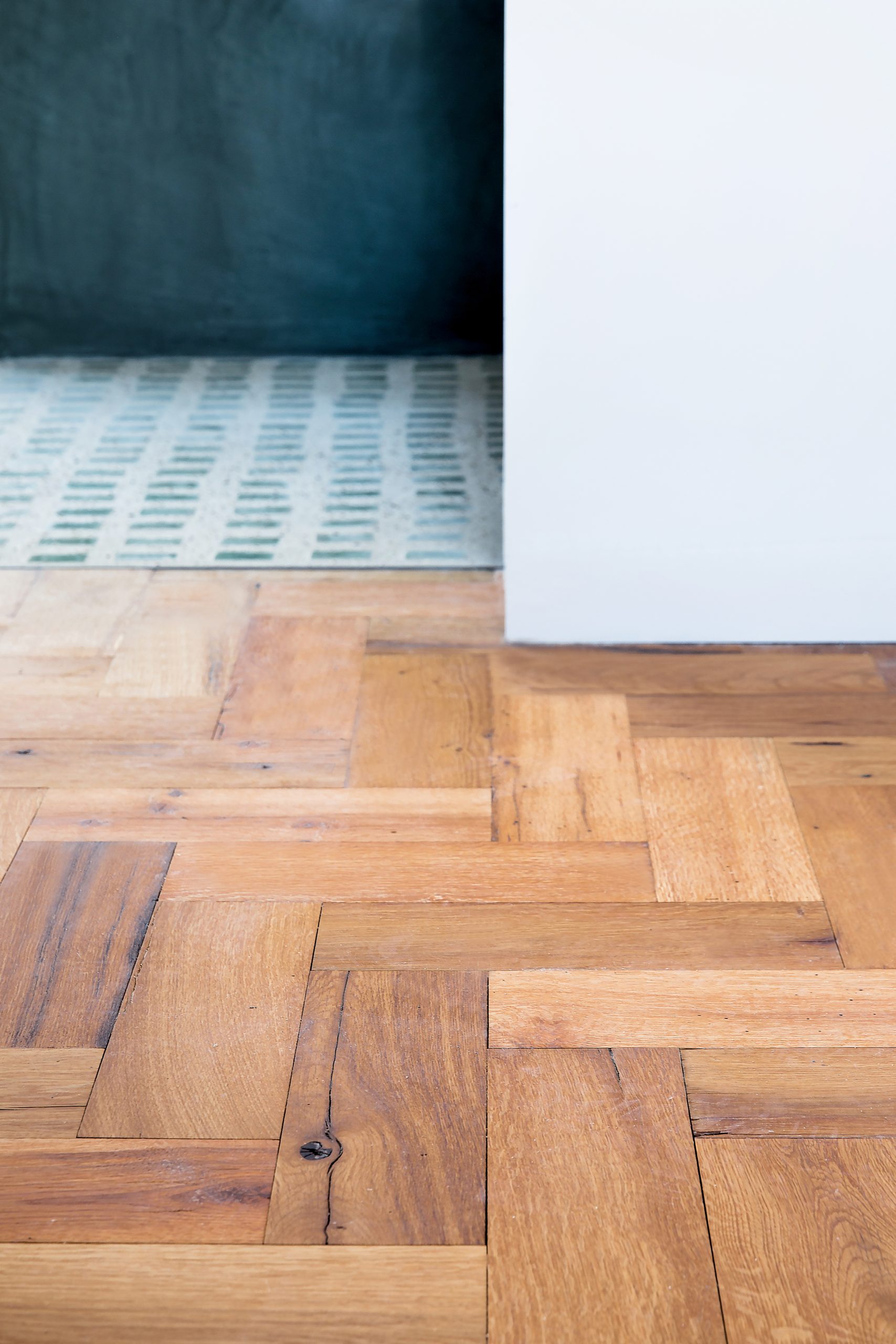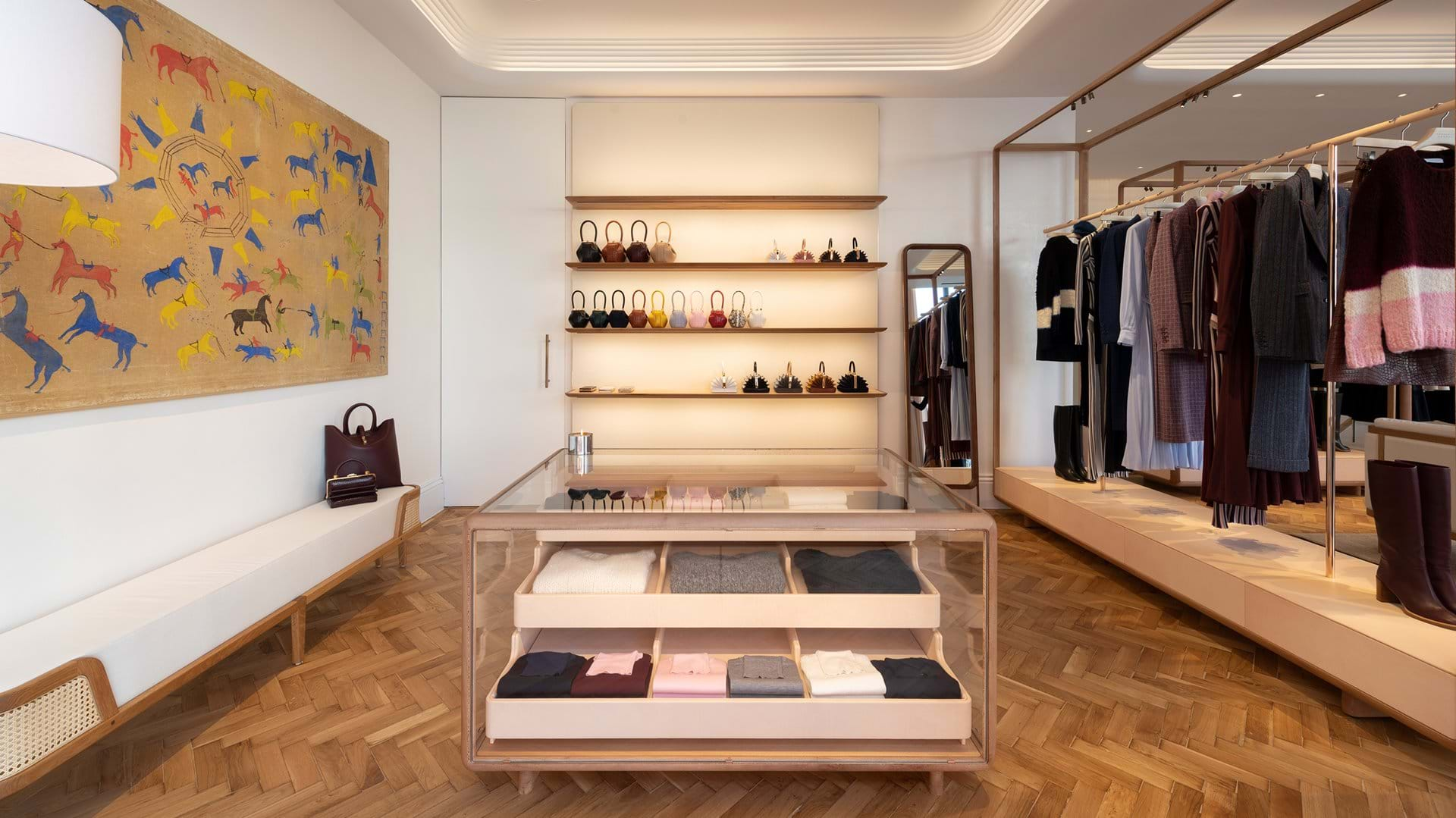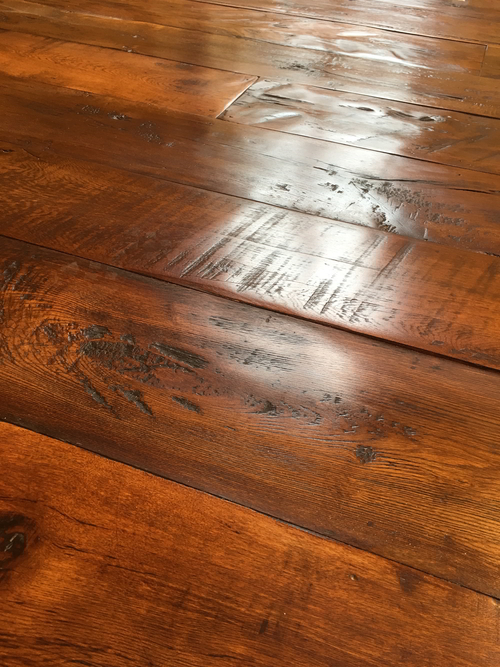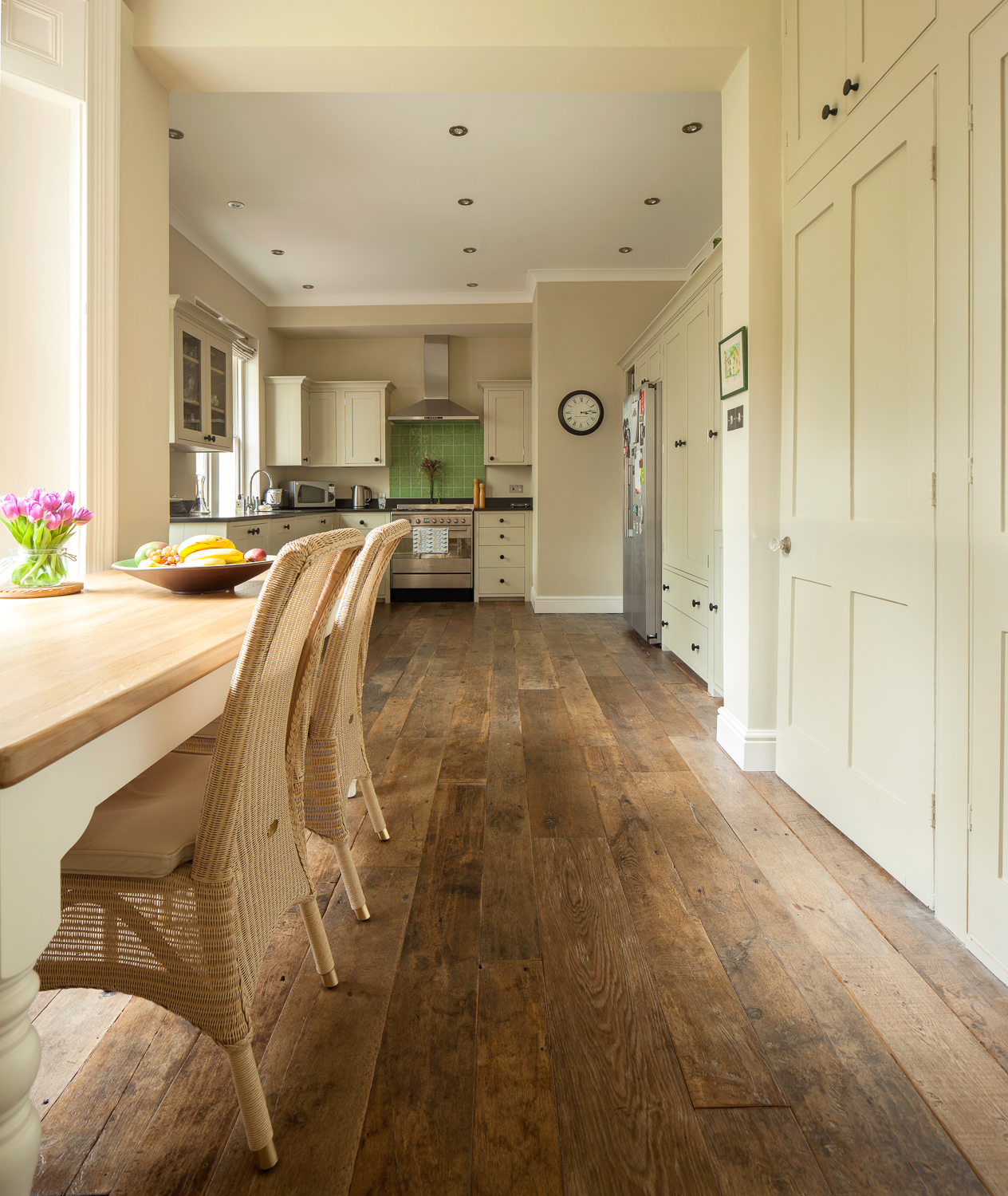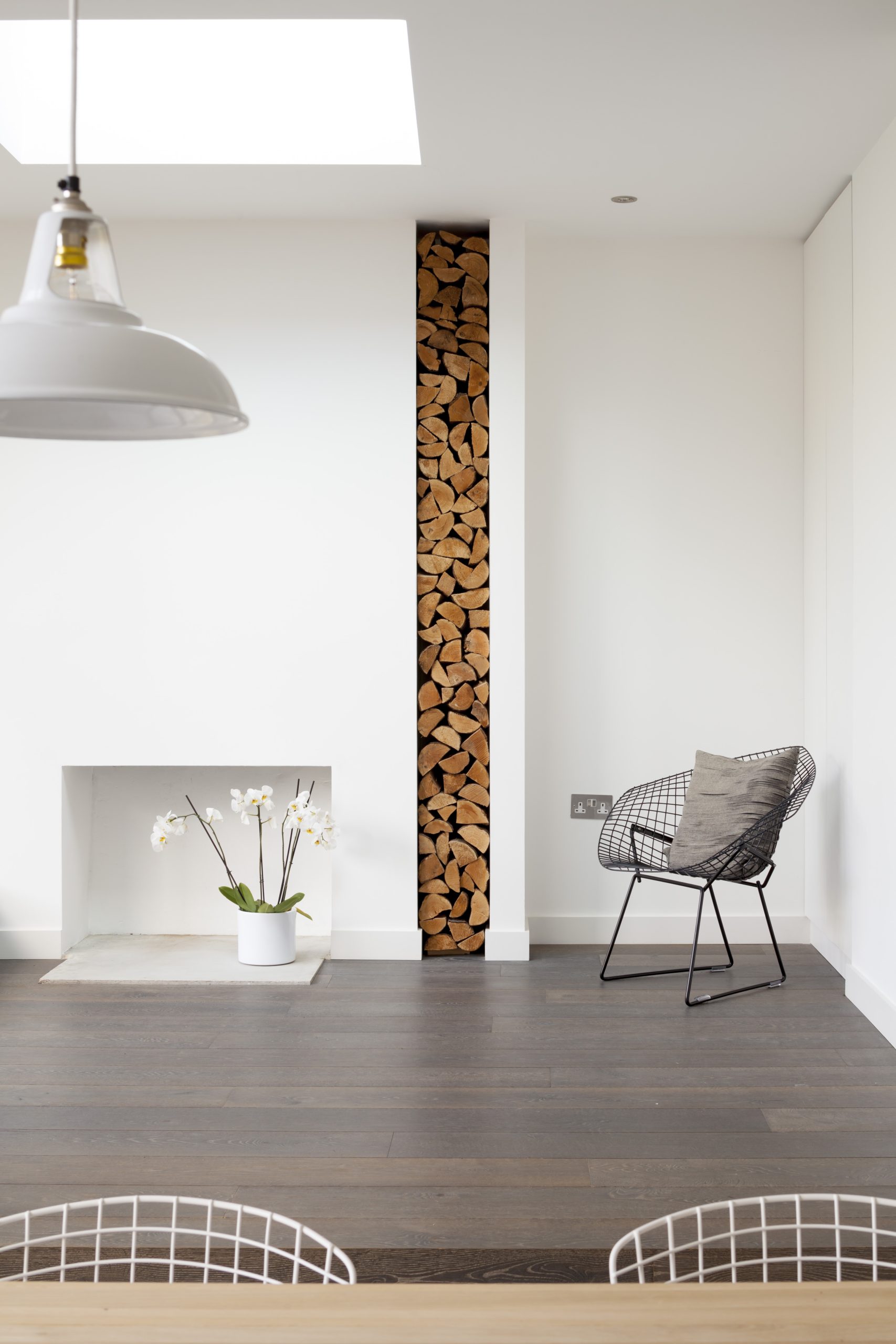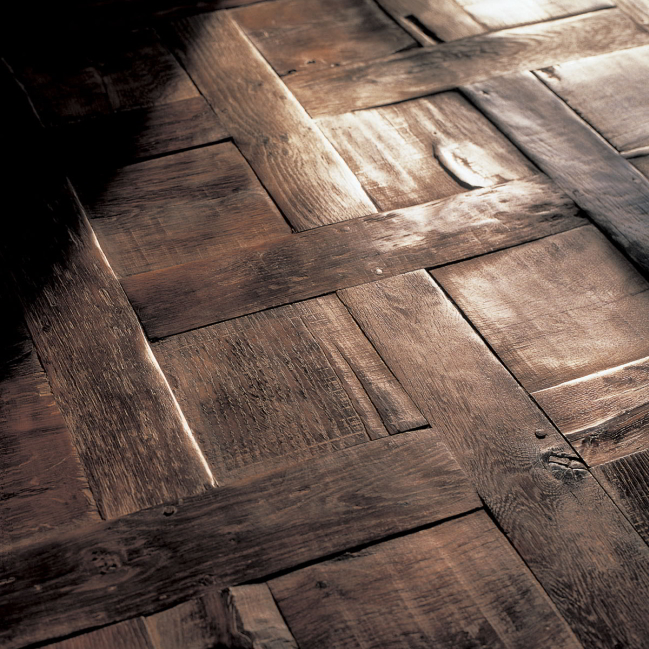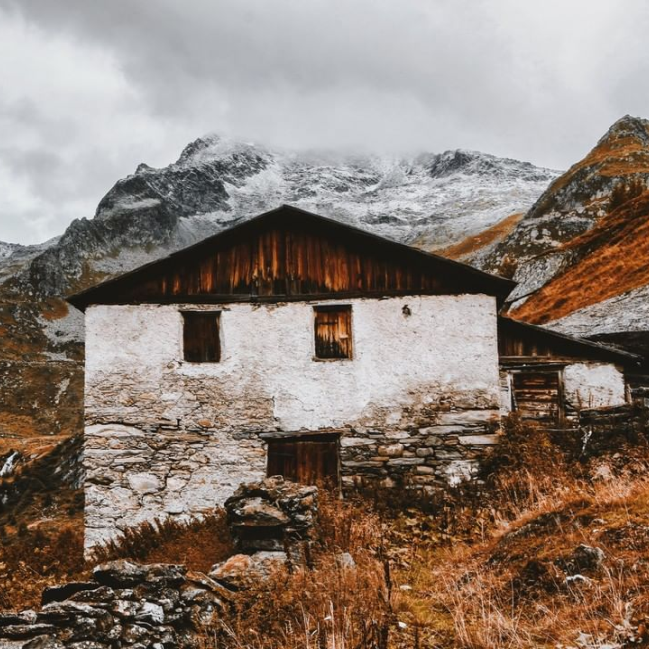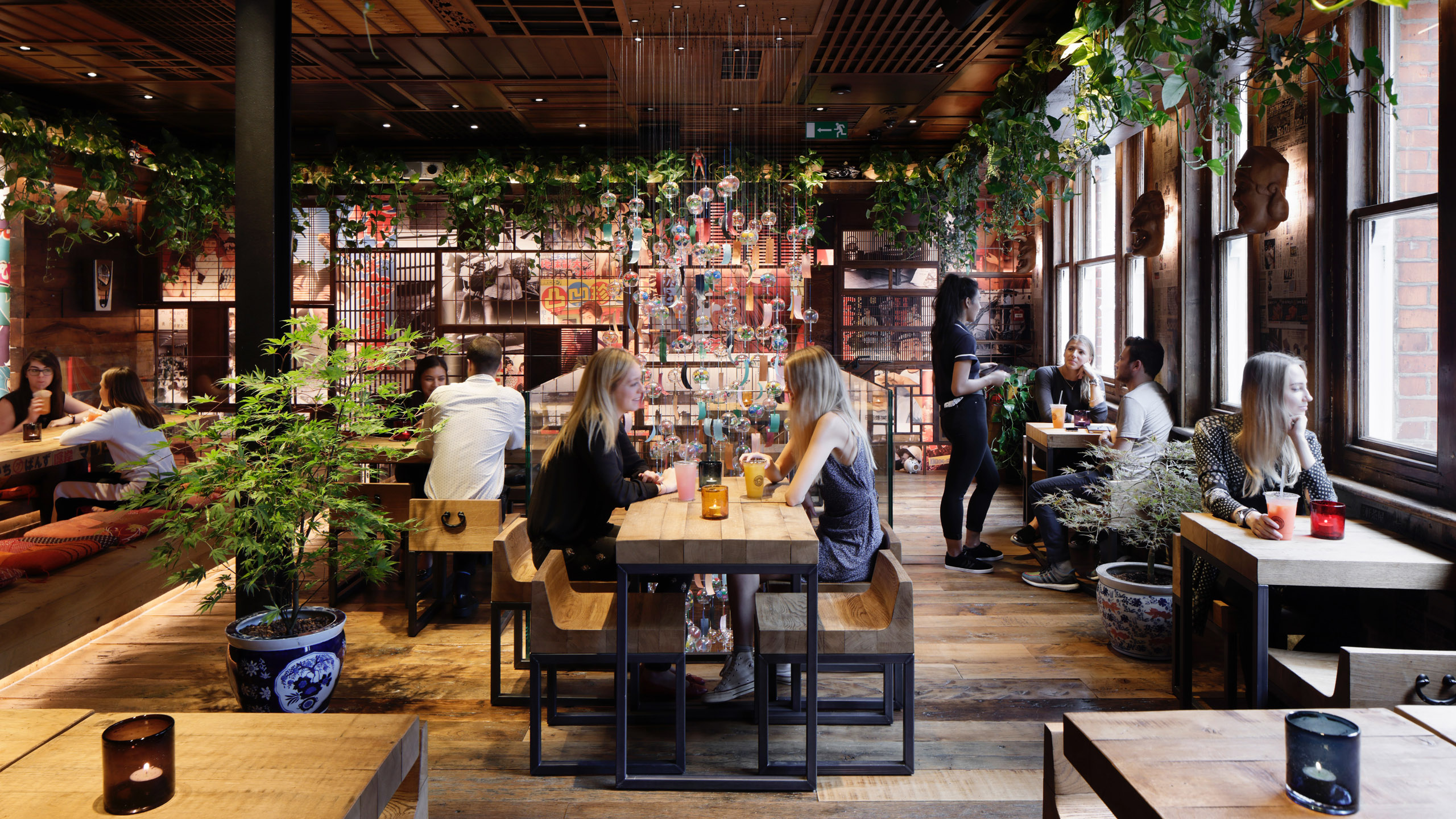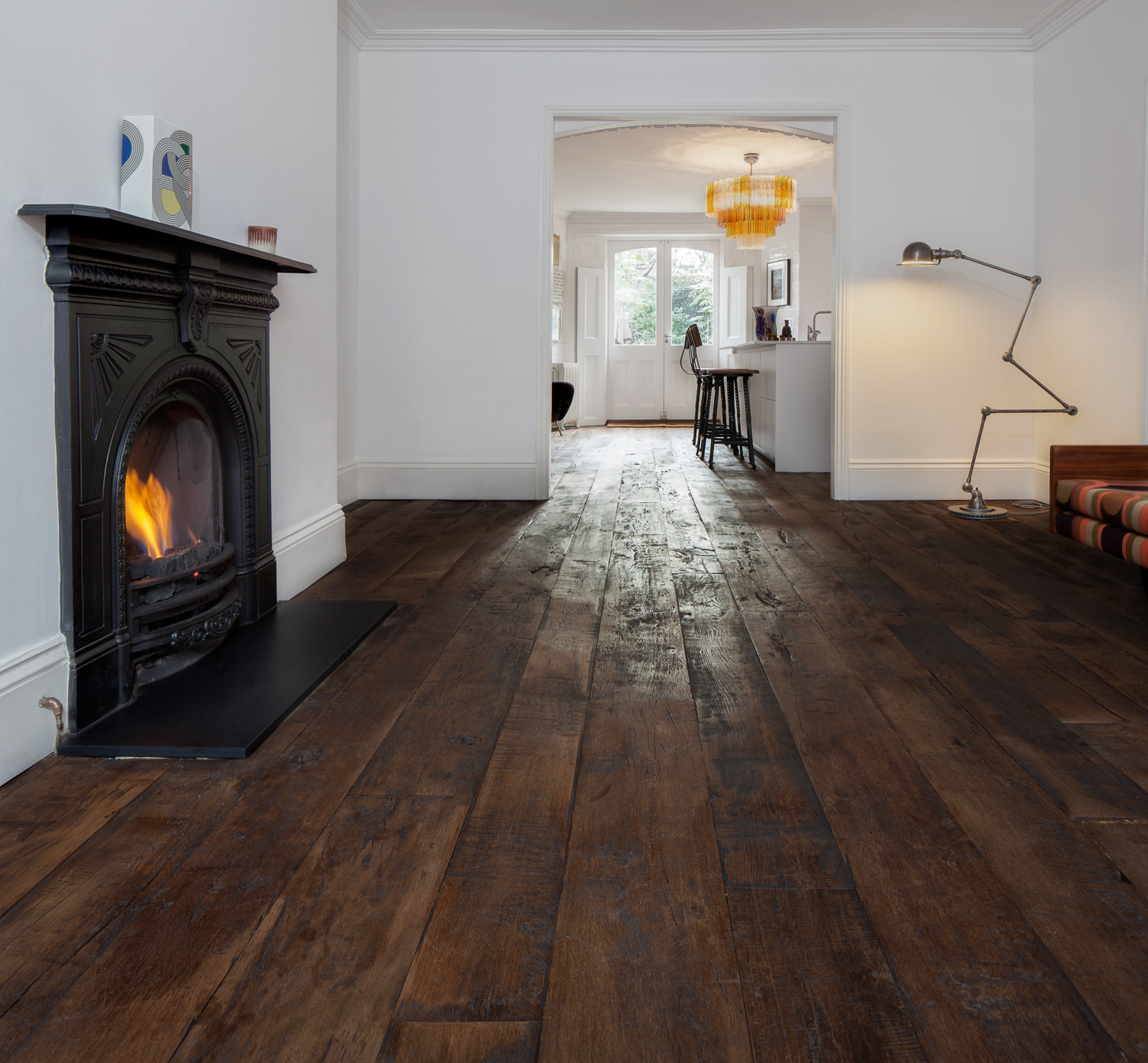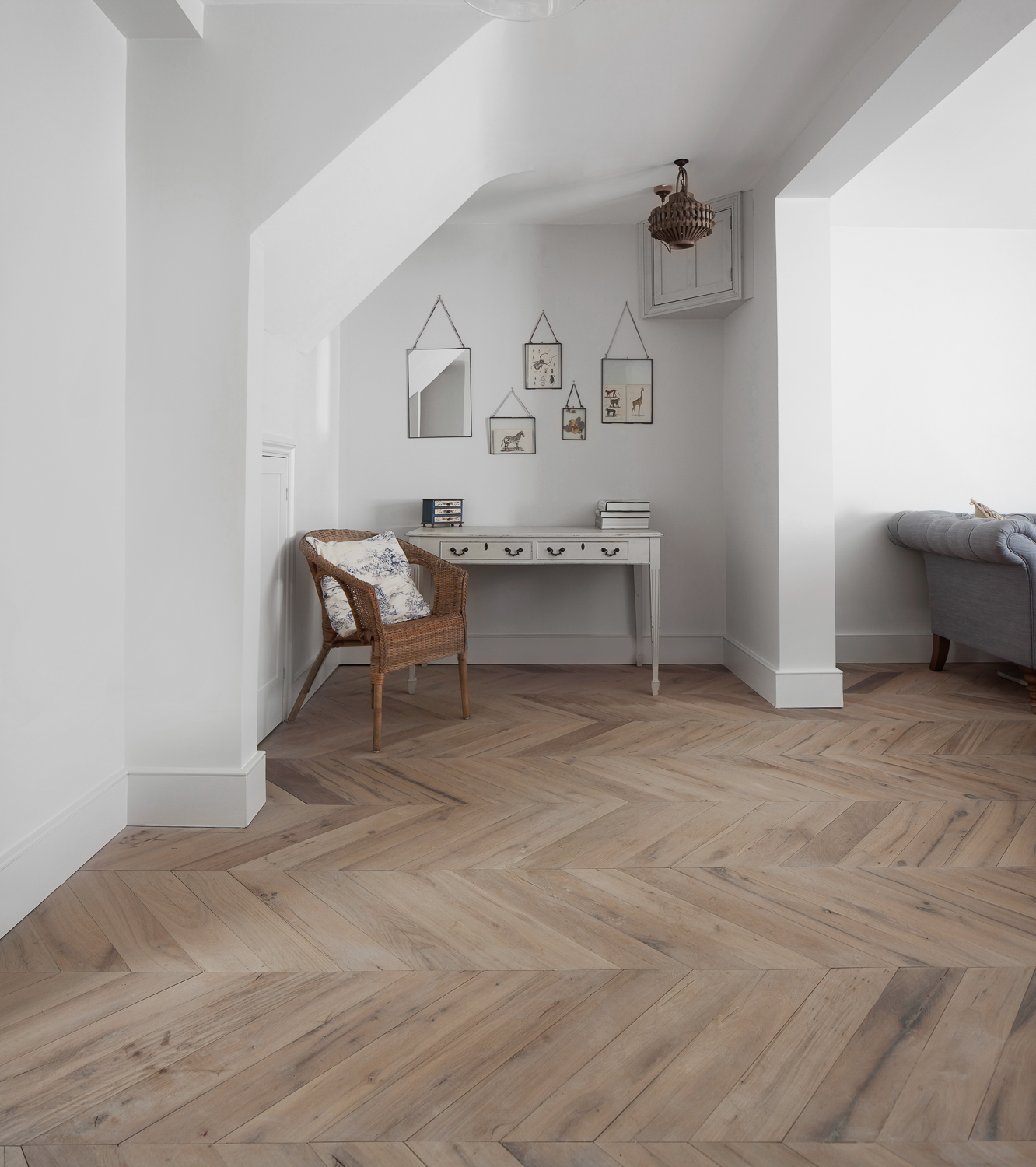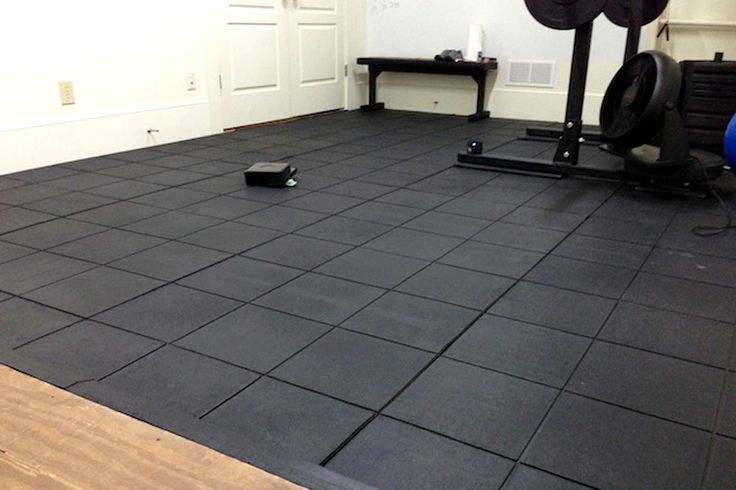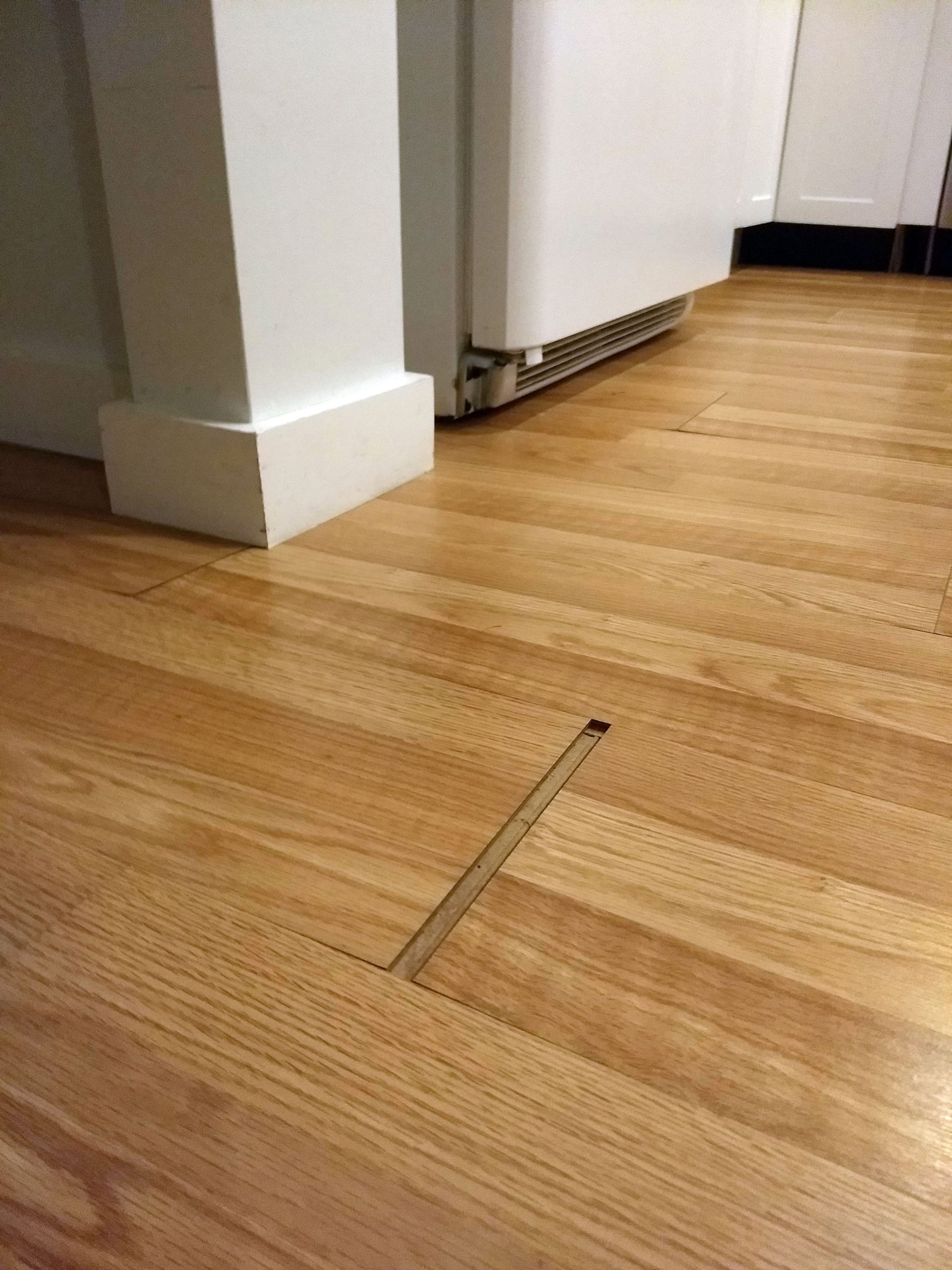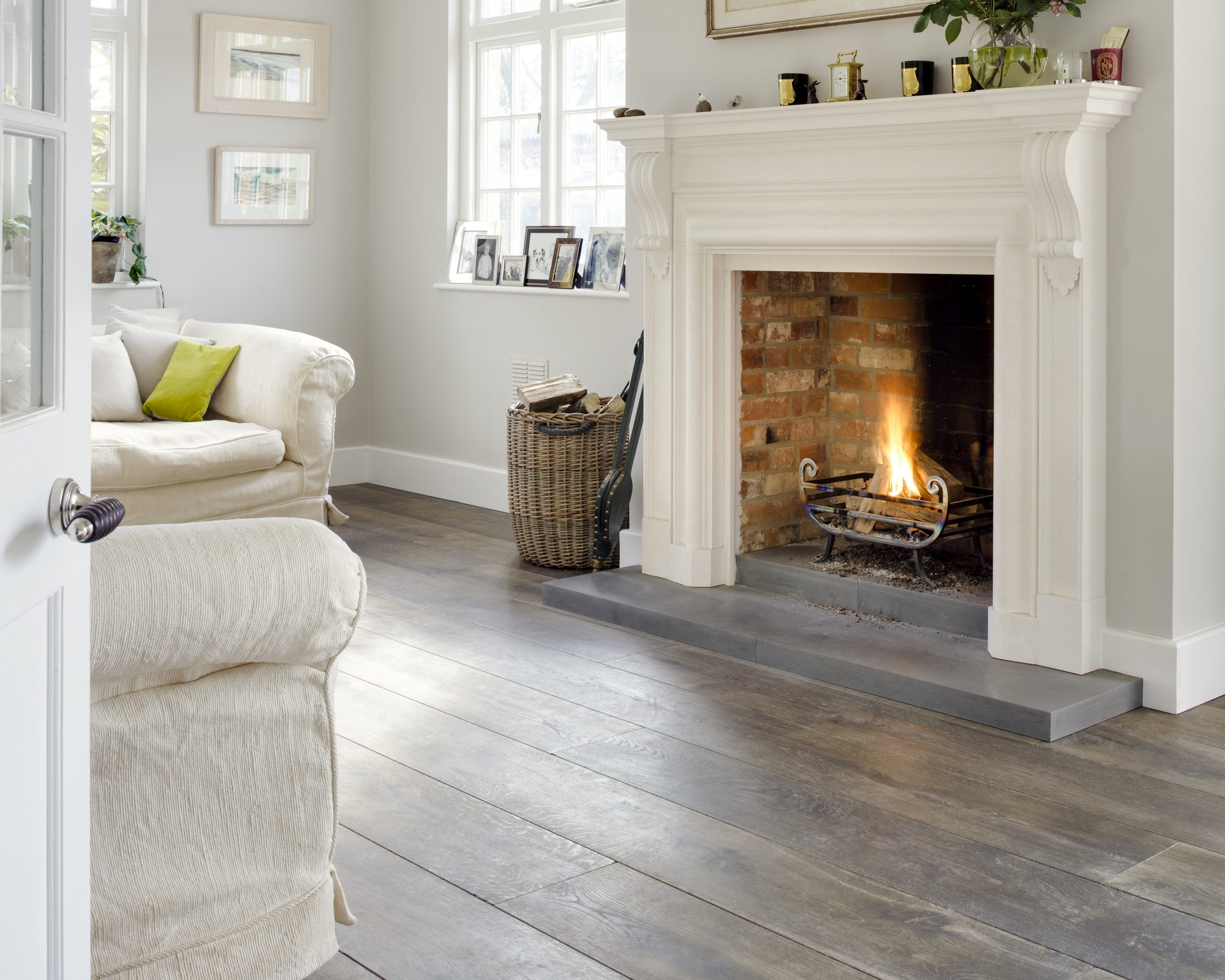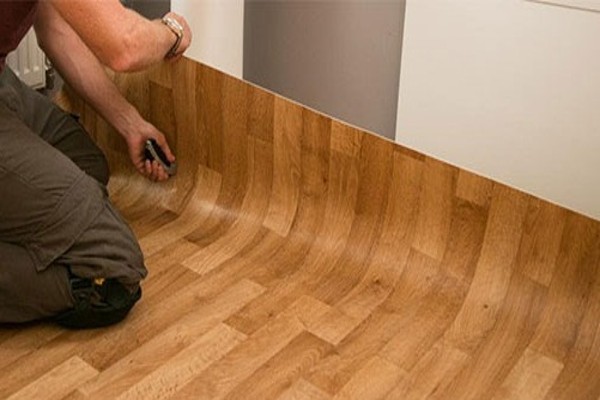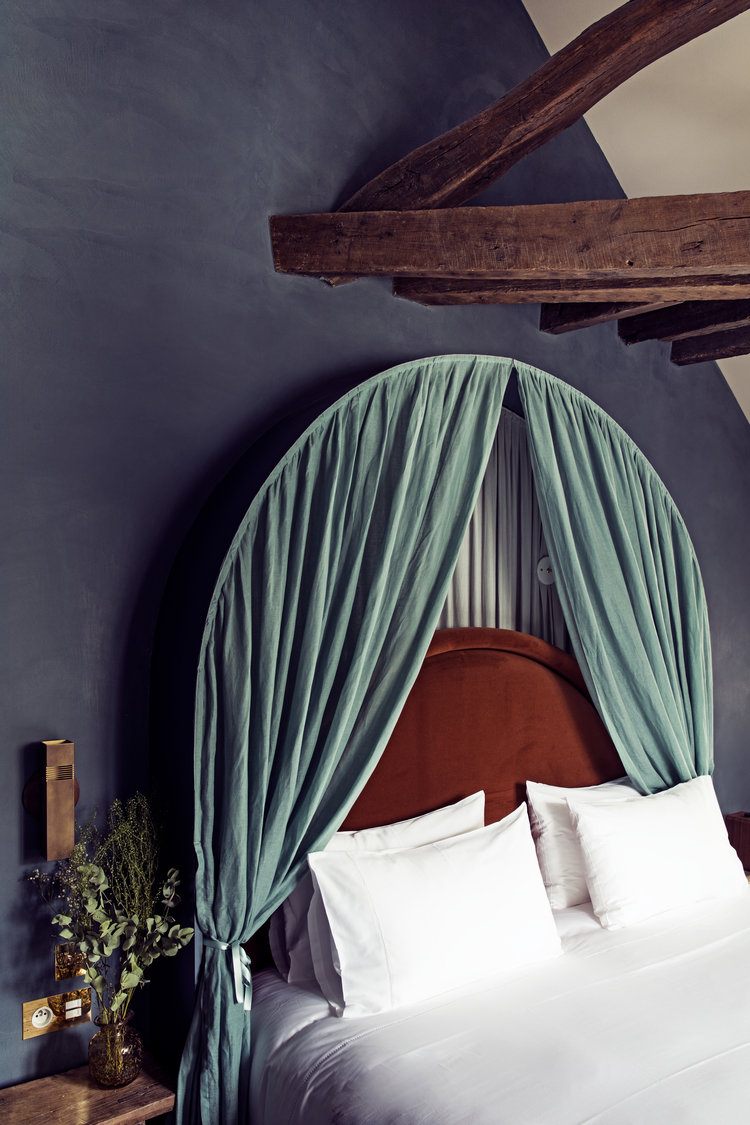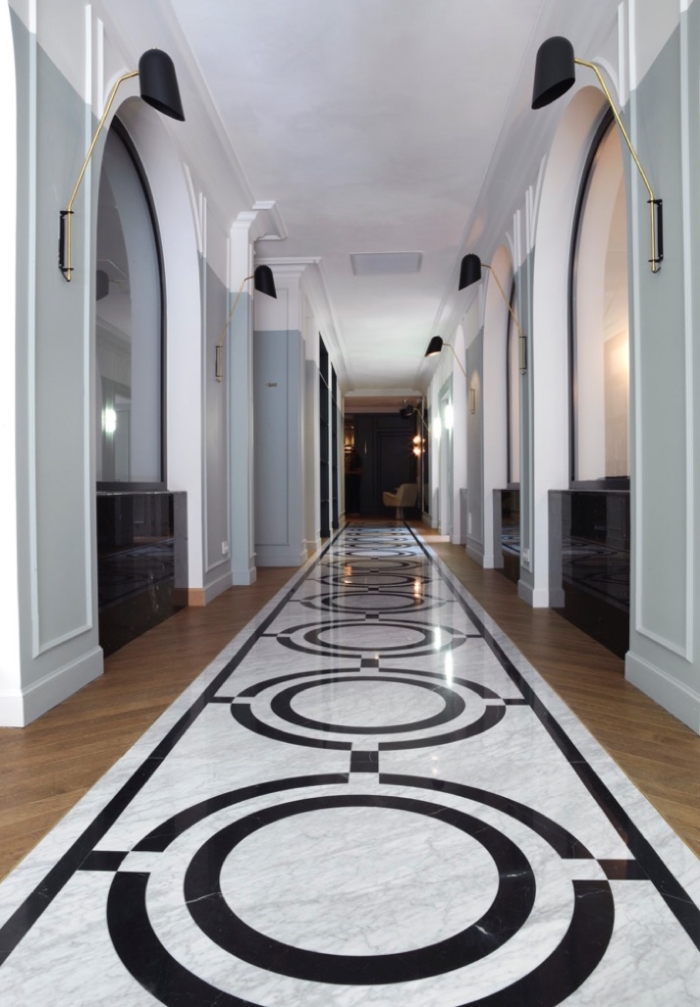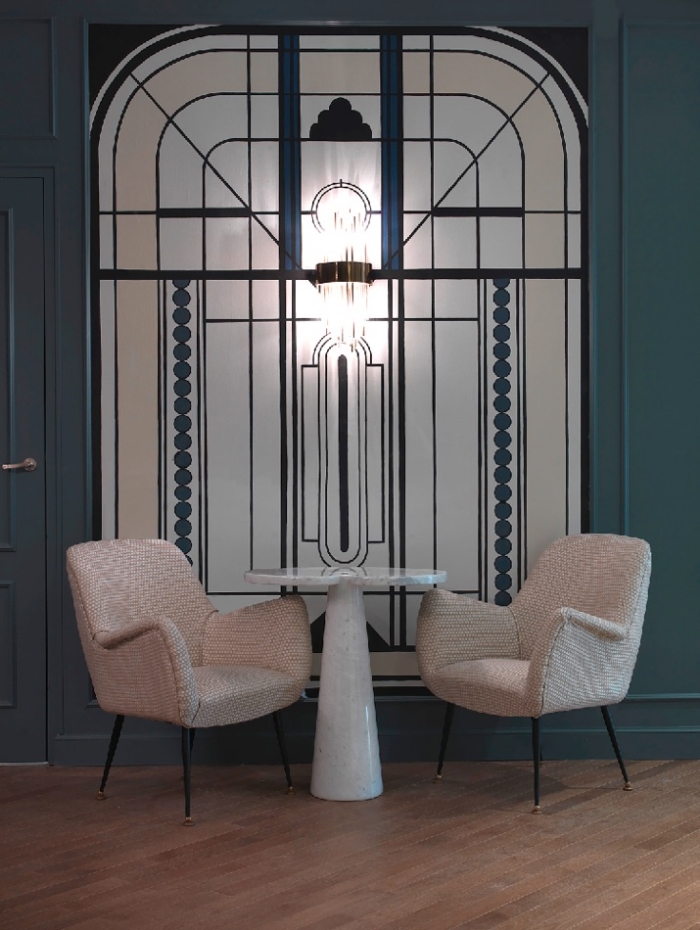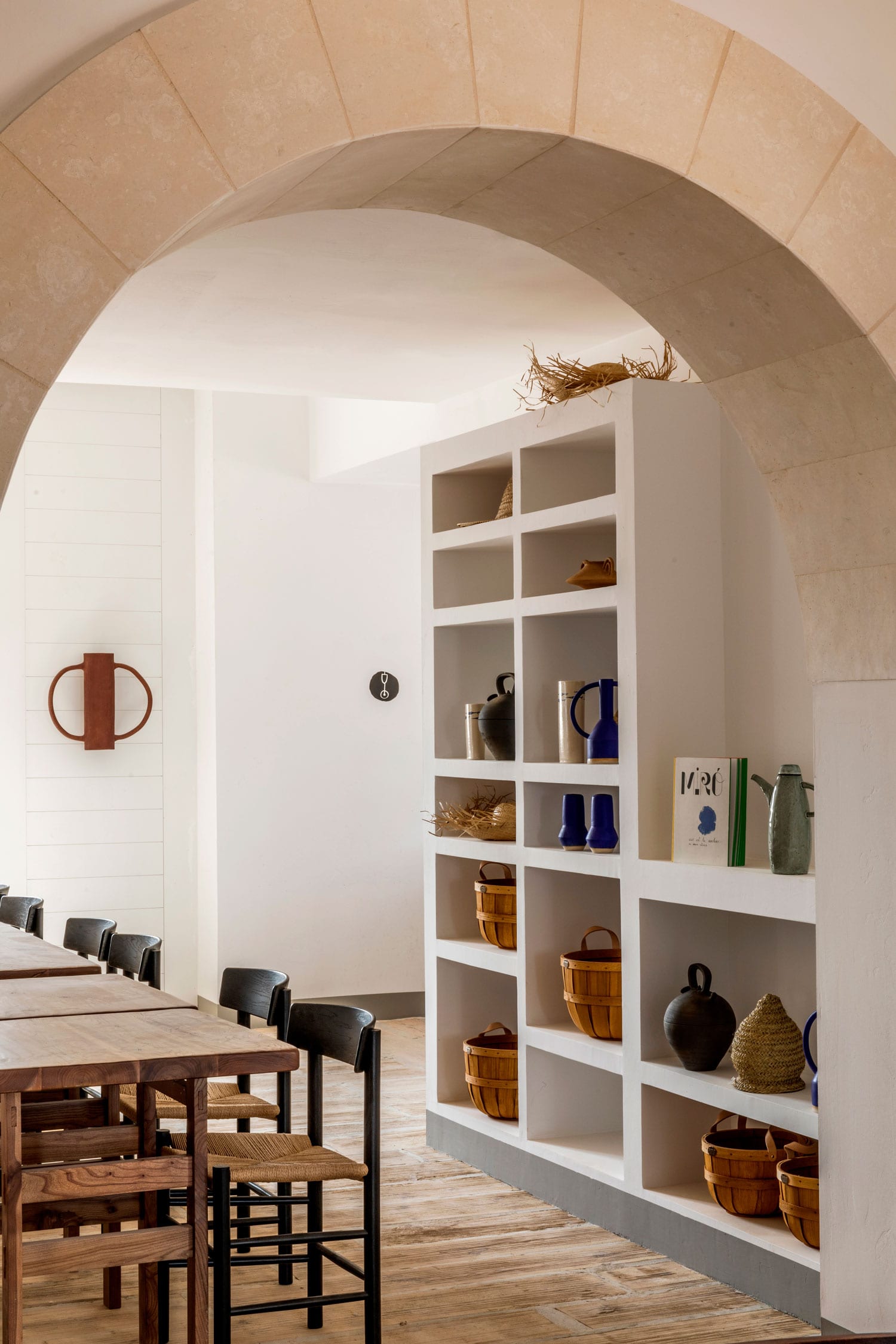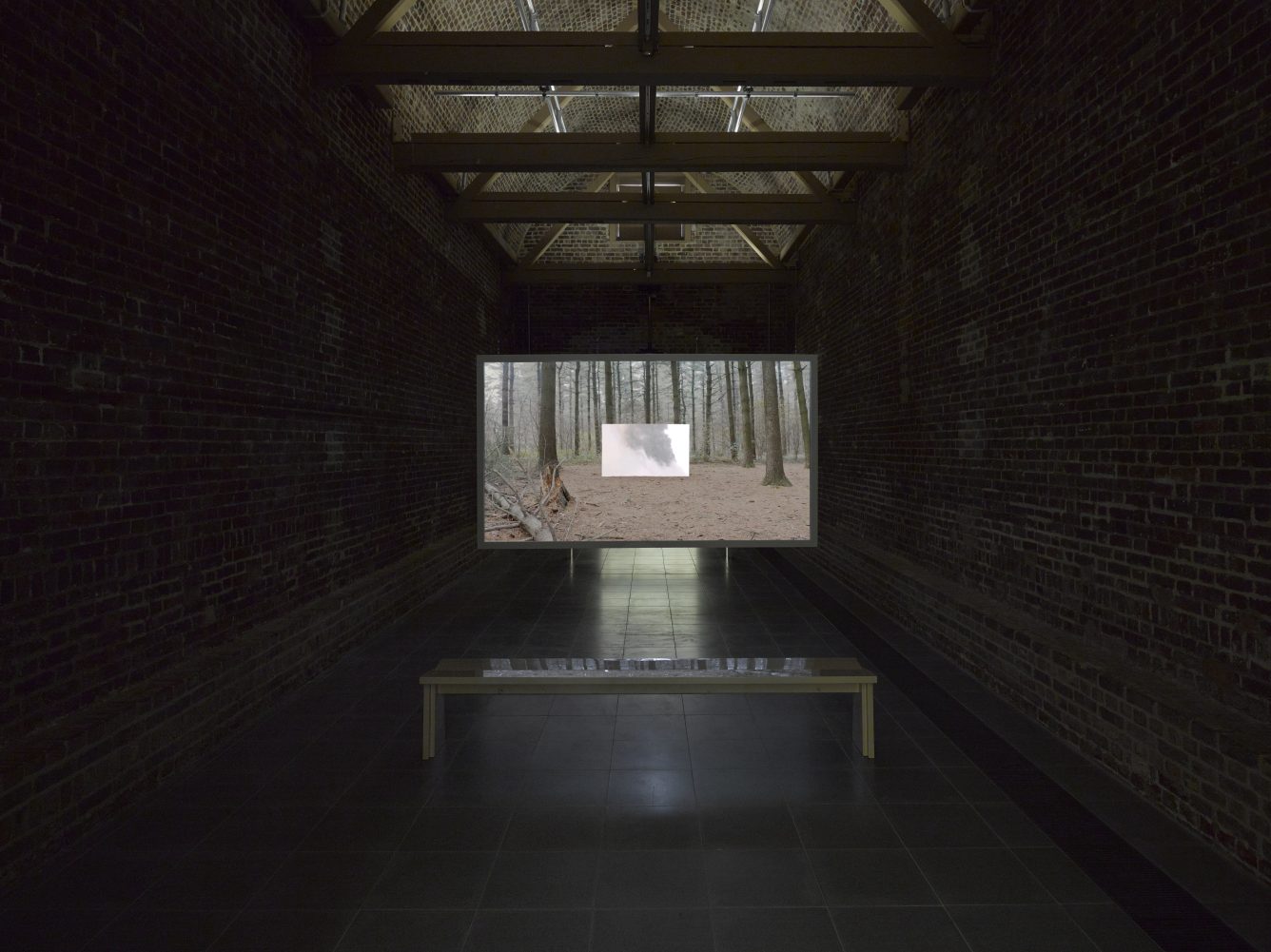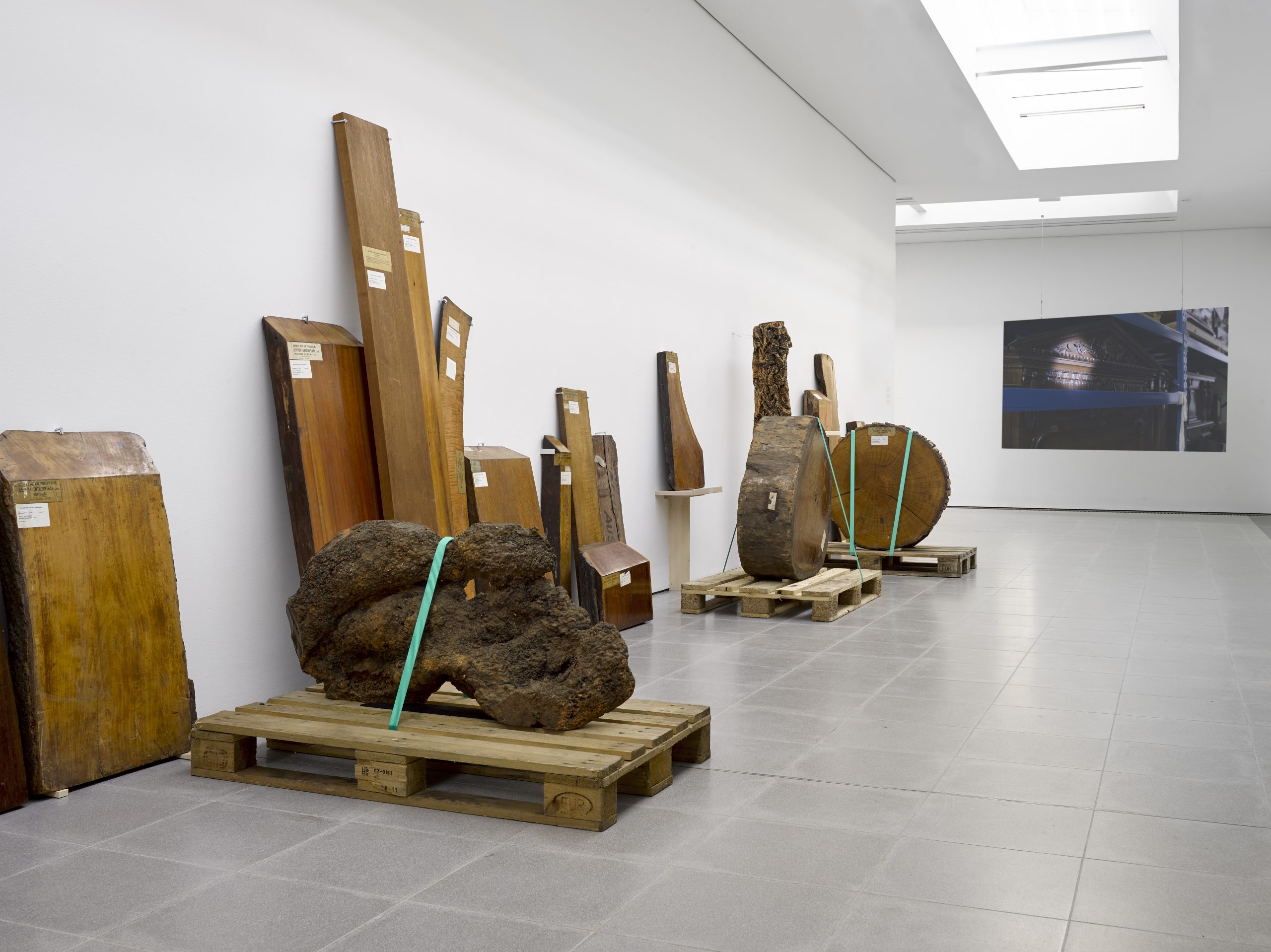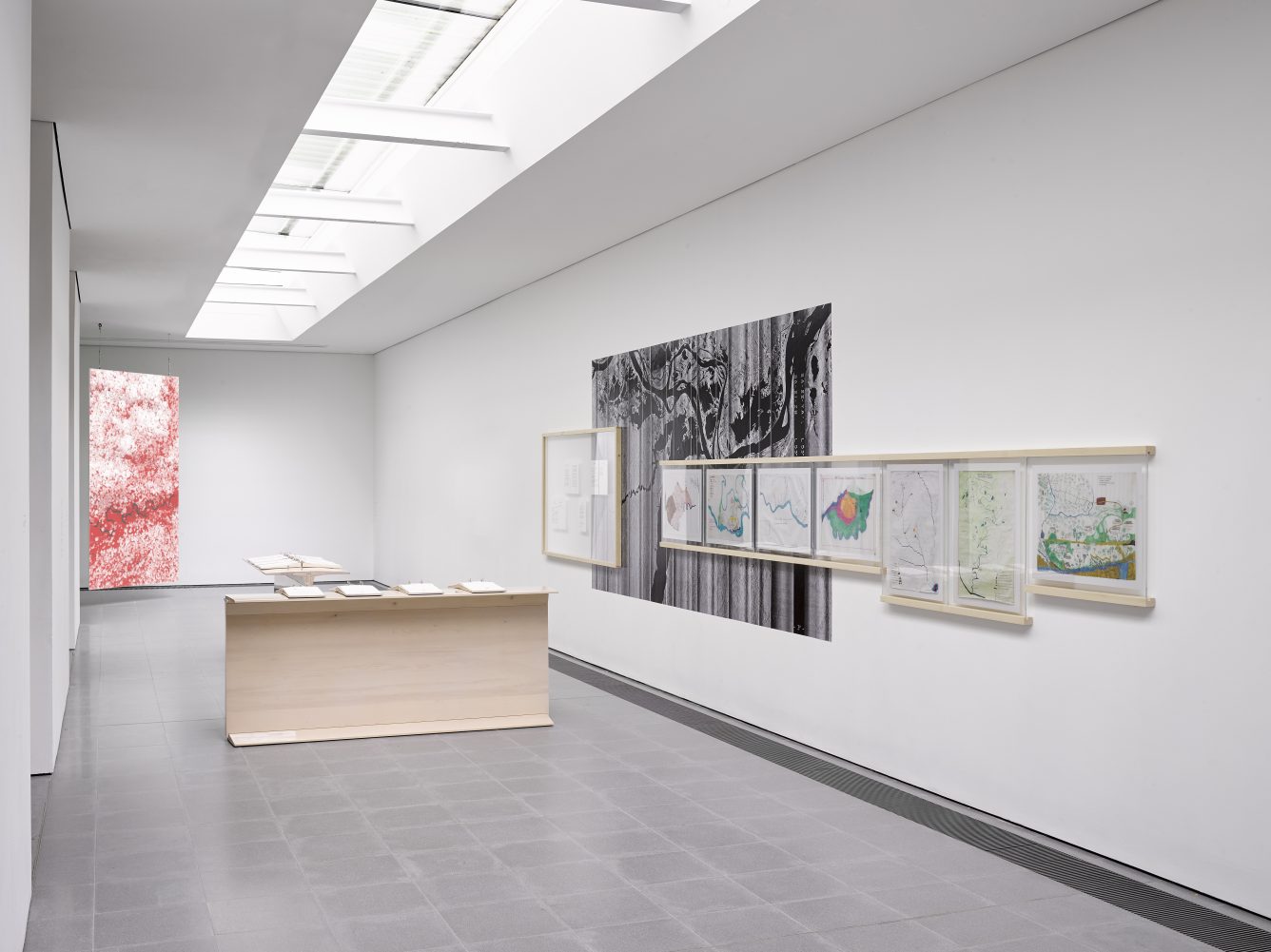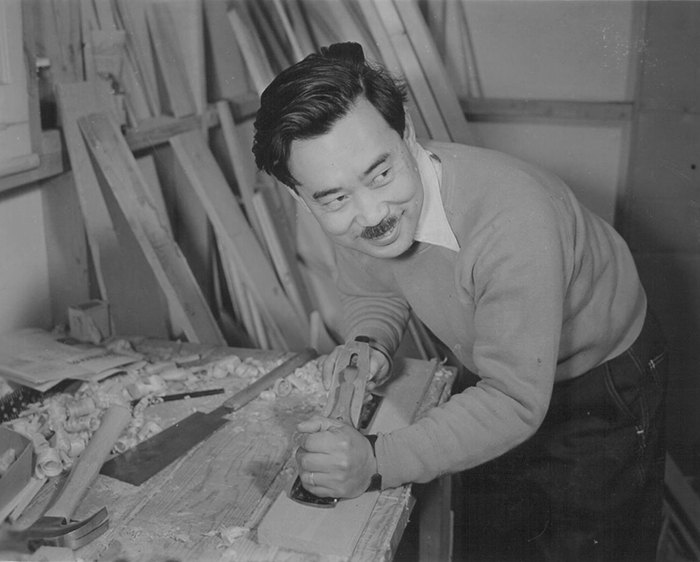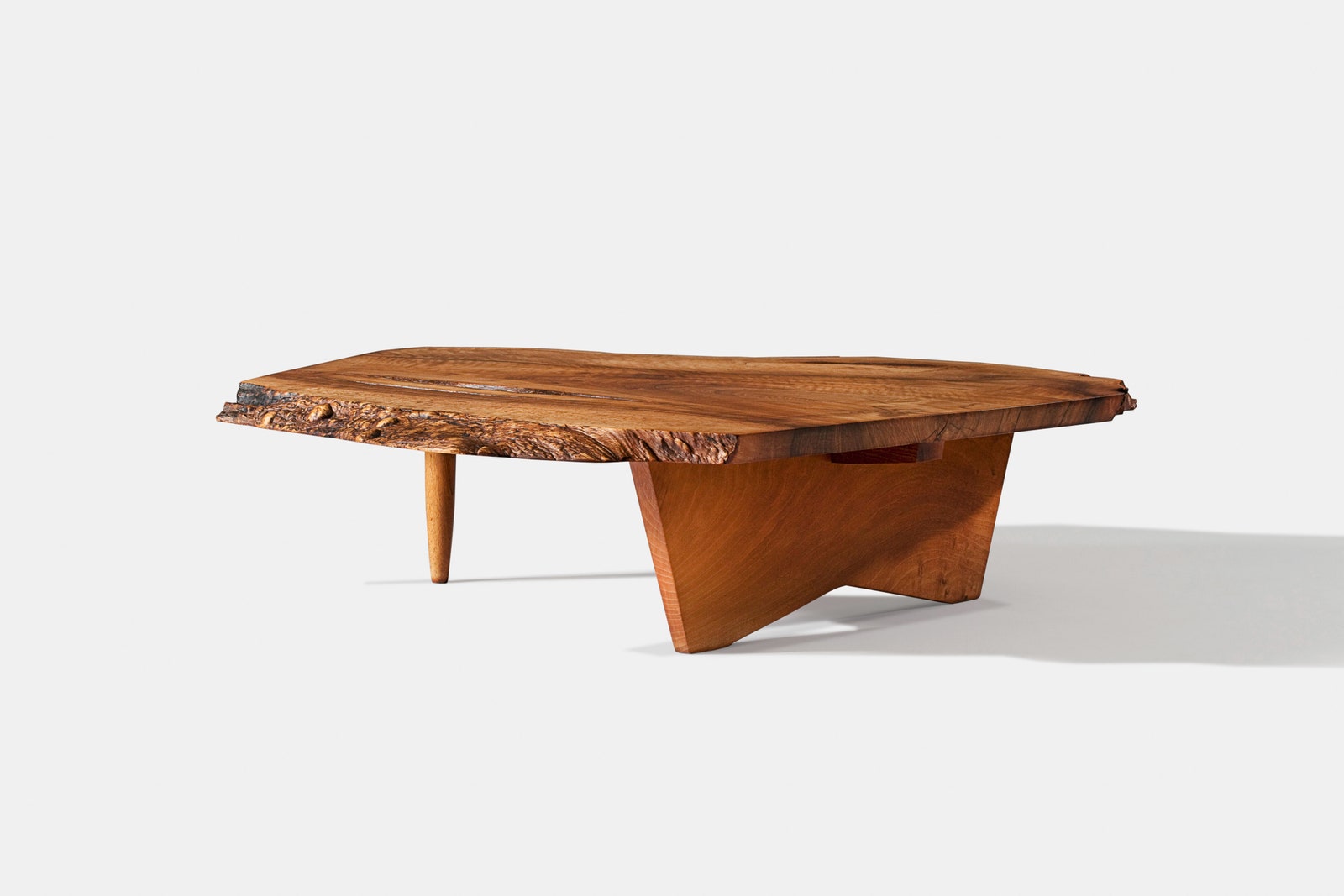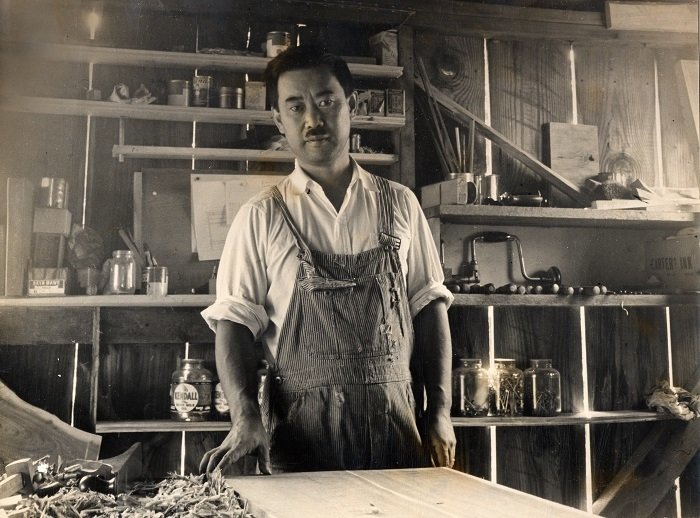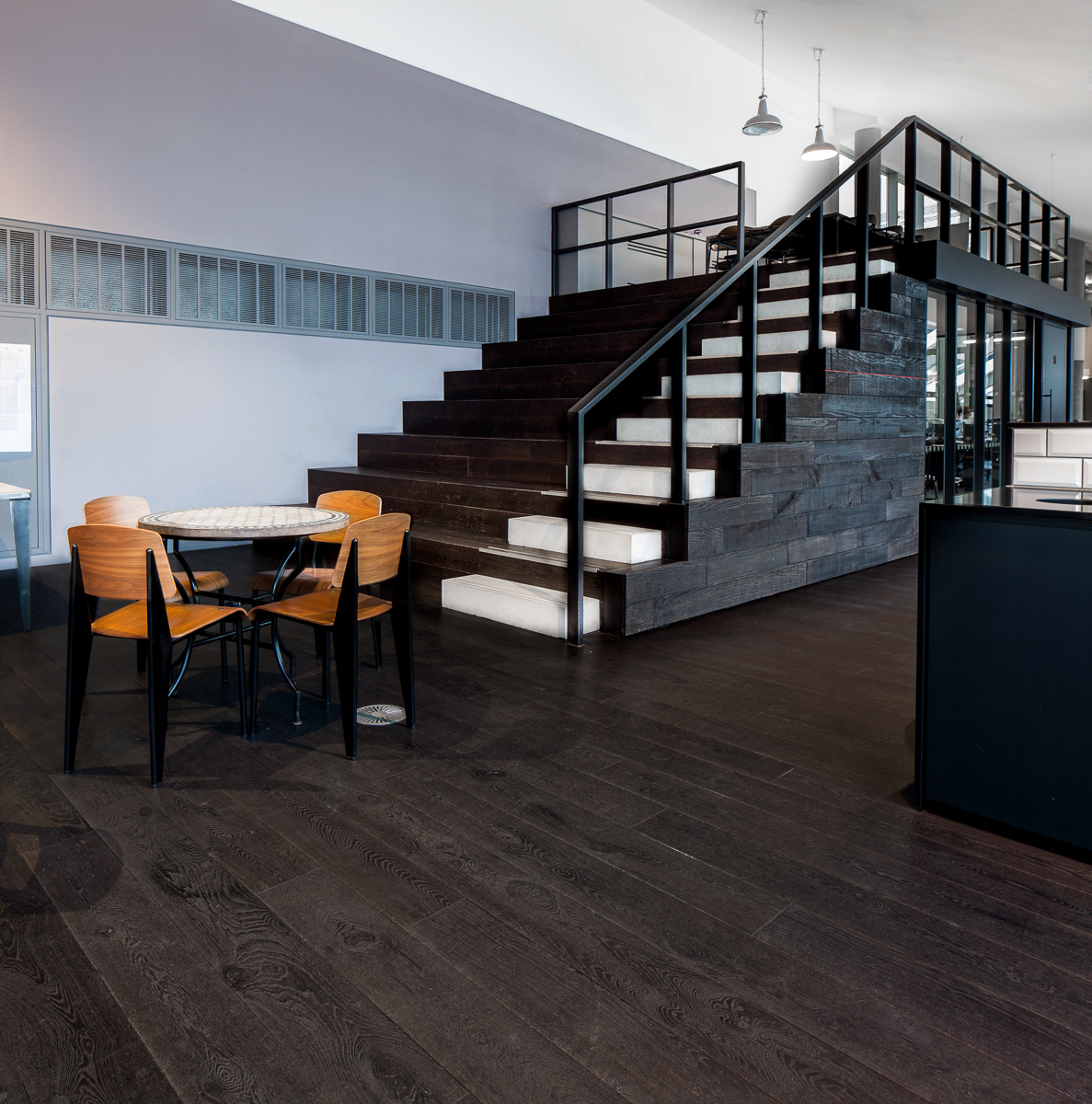
Far from being simply a way to transition between different areas in a residential and commercial property, designing a staircase to fit your interior style and deliver that finishing touch is an important consideration.
Whether you’re building a new space or giving an existing one a makeover, fitting your internal environment with beautiful wood flooring can be a statement feature that guarantees a “wow factor”.
But if you want to make space even more elegant and impressive, you can also upgrade your stairway with a wood surface, treads and risers.
And when centrally positioned opposite the dwelling’s main entrance, this architectural feature can contribute enormously to that all-important first impression.
Because of the uniqueness of each individual staircase, there are a variety of woods available to choose from that will be most suited for your property.
The type of wood species you opt for can add different aesthetics to your décor — your stairs can dramatic, elegant, impactful, quirky and even multi-functional.
Some of the more popular and commonly used varieties of timber are oak, pine, reclaimed wood and distressed woods, along with the use of a variety of finishes.
So, whether it is a modern, contemporary, rustic or a traditional look that you desire, there’re limitless possibilities to suit any period or style.
Even better, the timber stairs can be stained to match other wood fixtures and fittings in your home.
Reasons for wanting wood flooring for stairs
Aside from the visual magnificence of wood as a finishing material, sometimes the decision to replace stair flooring is born out of necessity.
In this case, maybe a worn carpet or damaged treads present danger and therefore need to be dealt with as soon as possible.
For this reason, many people tend to lean towards wood for a high-quality application that is long-lasting and looks great for many, many years.
1. Wood is hardwearing
Unlike other areas, the hall, landing and stairs undoubtedly take more foot traffic in a majority of residential properties. This is a crucial element to ponder upon when it comes to choosing between wood flooring and other available options for stairs and landing areas.
To start with; wood flooring is naturally strong and easily outlast other materials, particularly if you install a tough, hardwood floor. For example, European oak is around three times harder than most wood species available.
When it comes to the initial outlay of cost, it may be slightly more than expected. However, it pays to remember the longevity of wood floors when compared to carpet or laminate. It may well pay for itself in the long run as you most likely won’t need to replace it within your lifetime.
2. Easily refinished
As mentioned previously, wood stairs stand strong despite heavy traffic, which allows them to hold up extremely well over time as opposed to materials such as carpet, which is prone to staining and collecting dirt.
What’s more, wood stairs can withstand being refinished, painted, varnished and waxed — meaning you can give them a fresh look and feel with minimal effort virtually any time as your design preferences evolve.
You can also add handrails, balusters and other elements to wood stairs to suit any change to your interior décor through the years without having to worry about potentially damaging the stairs.
3. Adds value to your property
There is no doubt that an addition of a natural wood staircase can instantly reinvigorate your space, giving it a new, fresh angle and feel. If perhaps you’re considering putting your property up for sale and are going for top-end prices or want to ensure that it stands out from the crowd, a wooden staircase can really deliver a significant visual and aesthetic impact that gives you the results you are after.
“Should I use the same wood from the floor on my stairs?” is a question we hear all too often. Many property owners have difficulty deciding, but matching stairs and flooring surface application is welcomed and encouraged.
Staircases (tread, riser, and noising) look especially best when they match the interior aesthetic of the rest of the house — this style is exact and precise. If you are one for making a statement, the opportunity to customise stairs from the same timber as your flooring and stain to match will certainly ensure an overall sense of continuity.
The uniformity of matching staircases to the rest of your interior flooring creates seamless transition and improves the overall symbiotic flow. Carrying the look throughout is how you connect the lower and upper level and create harmonious living.
If different levels of your interior space use wood, for example, carpeted stairs would look a little out of place or create an abrupt barrier that disrupts the overall flow and design of the space. However, that doesn’t mean you can’t switch things up a bit.
One point to keep in mind is that subtle design aspect like the grain direction, wood contour, and finish colours and textures can be the much-needed catalyst for softening things up and breaking up the monotony of everything being the same.
Understanding the difference between solid and engineered wood floors for stairs
To make an informed decision when it comes to choosing solid or engineered wood for stairs, it’s important to first understand how the two differ. As the name suggests, solid wood planks are constructed from one single piece of wood, for example, oak; and Engineered wood floorboards are created from a top layer of real wood combined with bonded layers of plywood or HDF base.
Whichever way you decide to go, both solid and engineered hardwood flooring offers some gorgeous staircase effects.
If solid floorboards are your preferred selection; because of their structure, the edge of the tread can be worked to create a nice finish. The rounded effect on the edge of each step or tread can be easily shaped by machining the wood. Furthermore, solid wood gives you an opportunity to sand and refinish many times should the high staircase footfall cause damage.
On the other hand, the upside of using engineered wood is that it responds well to changes in humidity and temperature. It can be a challenge to machine the board to a bullnose (or similar) finish so a solid stair nosing will need to be introduced in order to achieve safety and stability.
Choose experienced professionals to fit your stair flooring
With any stairway design, a well-installed wood finish is one of the best ways to give your entire space depth and dimension. This happens when you ensure that your new staircase finish is properly and safely fitted. After all, the risk of injury from a trip or fall is far greater on a staircase than it is on a level floor.
When it comes to fitting, a quality manufacturer or professional fitter with a wealth of knowledge when it comes to design and installation will understand how to ensure the perfect fit and finish you are looking for.
If you can picture a wooden staircase in your home then it’s a possibility for you — and there’s absolutely no point in laying out money to buy your dream wooden floor if the finish ends up disappointing.
Conclusion
Suitable for both residential and commercial properties, timber lends a beautiful, natural appeal to any space that just can’t be achieved with other kinds of materials.
Beautiful and stylish, elegant and classic, interesting and adding a lot of charm, a well-designed and finished staircase can promote a feeling of harmony and stability, and factor in elements that match the scale and quality of the rest of an interior environment.
The wide array of wood species on the market today allow you to meet your requirements and personal taste perfectly. In regards to achieving cohesion and seamless transition throughout your entire space, using the same wood from your floor on your stairs can provide an added touch of luxury and personalisation.

With today’s higher echelon of sustainable choices, we can create our own beautiful, stylish interior space with integrity at its heart.
Despite its long-standing popularity, vegan interior design has begun to garner mainstream attention fairly recently, driven by the rapid explosion of the vegan food and fashion movement.
Vegan interior design encompasses healthy considerations — a space aligned with animal-friendly, human-friendly, and planet-friendly design strategies.
That means finding alternatives to fabrics and furnishings like leather, suede, down, fur, silk, and wool.
Likewise, products made from any harsh chemicals or toxin components would all be off-limits, too.
The demand for vegan interiors is being driven by the high-end market — hence it’s no surprise it has drawn in incredibly creative thinkers and ethical designer-makers.
We now have the understanding and technology to make humane and cruelty-free materials, fabrics and products all possible.
Times are changing as well — scientists are creating stunning leather from fruits and veggies (biofabrication), replacing silk with luxurious bamboo and banana silk fabrics, recycling plastics into beautifully soft textiles and turning trees into luxury furnishing in a bid to tackle some of the environmental and ethical impacts of material and fabric production.
For example, a type of leather can be made from mushroom spores or mycelium which is grown into the required shapes using heat and light in a nutrient bath.
These plant-based alternatives are of excellent quality and beautifully emulate the texture of the best animal products, but far gentler and more durable.
How do we incorporate vegan-friendly interior products?
Environmentally responsible living has been a consistent interest for a large number of consumers.
Whilst vegan-led design is on the map, it’s not always an effortless task sourcing finishes, fittings and furniture that do not negatively affect animals or contain any harmful components.
In fact, what goes into a product isn’t always revealed or easy to trace.
Creating a vegan home means wakening up to the devastating impact our current lifestyle has on living creatures and the environment.
It’s often a journey that starts with small steps and requires extensive research and a level of commitment.
The first step to getting it right lies in asking questions, sourcing with integrity from ethical companies, and commissioning local artisans to create bespoke pieces that complement a vegan home.
It’s an intimidating and time-consuming task to take on, but the trade-off is existentially rewarding.
After all, vegan design is conscious design. It’s exciting to create beautiful environments that promote ways of living in harmony with other living creatures, without damaging the environment, too.
It’s about time we begin to embrace spaces that embody our healthful ideals and encourage a shift towards a more holistic approach.
What about wood flooring? Is it vegan?
As increasing numbers of property owners are becoming more and more committed to environmental responsibility, the opportunity to use finishes and construct interior spaces grounded in eco-friendly design and mindful living is increasing in parallel.
This makes perfect sense since the world is quickly shifting towards a more sustainable future — a future that reflects who we are, bring out the best in us, contributes to the ease and enjoyment of one’s life.
Eco-friendly, conscious materials do, of course, also extend to investing in sustainable flooring, hard surfaces, structural elements and wall coverings to improve the value of our interior spaces. As we continue to embrace our connection to nature, we realise that when it comes to building green, not all materials are created equal.
Wood sourced from responsibly managed and well-protected forests to make floorboards is one of the most obvious option that’s both eco-friendly and aesthetically pleasing. Purchasing FSC (Forest Stewardship Council) certificated wood boards signifies that the timber used for flooring is replaced.
Choosing sustainable products for your home also means tapping into the use of floors that are high quality and built to last. By definition, “sustainable” refers to something that is capable of being maintained at a certain level, and this principle should also apply to the flooring you choose.
Indeed, wood is one of the best earth-friendly and renewable materials you can opt for. Timber flooring manufacturers are beginning to look at the many opportunities that aid in pushing the envelope and producing a greater diversity of eco-friendly flooring options to meet vegan sensibilities.
With timber flooring, common ecological problems include deforestation and loss of biodiversity. Therefore, we need to take into considering the type of wood flooring we introduce into our buildings. Oak, for example, happens to be one of the most sustainable wood species because forest management and protection programs make sure it is regularly replanted in forests. Plus, oak has a smaller carbon footprint and low gas emission during the manufacturing process compared to other flooring options.
Choose a company that values sustainability
When speaking of vegan interior design, it is crucial to look into the practices used by companies and manufacturers to help reduce the strain on the planet and all living things. You can significantly enhance your environmental responsibility by shopping with a company that has legitimate eco-credentials.
Look for organisations that domestically source materials from renewed forests. Another way, as previously mentioned, is to assess the brands’ committed to sustainable practices, and find out if it has received any third-party certifications from environmental groups such as the Forest Stewardship Council.
Conclusion
The commitment to avoid harming living creatures and having to lean towards eco-friendly practises extends to interior design. Caring for the environment, understanding how much of an impact our lifestyle choices have, and wanting to do our bit has now become a way of life for many people especially among millennials. And where millennials lead, businesses and brands often follow.
If you switch to vegan food, you exclude the use of all items that come from animals or involve exploiting living beings. Similarly, vegan home interiors are all about using cruelty-free architectural finishes and products in your internal space. But much like switching to a vegan diet plan, going fully vegan in your home decorating is completely possible but probably won’t happen overnight.

From the earliest times, wood properties were first understood by experience but have since evolved from a simple, readily available natural material to modern construction and engineering material used for high-quality applications.
Our relationship with wood has remained unchanged; and more recently, many of its uses now take different forms, due to new product demands and new technology.
Roland Ennos, an English professor of biological sciences at the University of Hull and the author of several books, delivers an illuminating and fluidly written study of the central role of wood in the human story.
Drawing from academic fields such as archaeology, anthropology, biomechanics, and architecture; this fascinating yet comprehensive book, The Age of Wood, highlights how wood has historically played a key role in human civilisation.
He reveals the links between trees and timber and a wide range of historical milestones.
From the evolution of the human hand (primates developed soft pads on their fingertips and nails instead of claws in order to better grip tree branches) to its usage for buildings, tools, paper, fuel, machines, mills, carts, furniture, barrels, and more.
His book attempts to refute the conventional perception that wood “is little more than an obsolete relic from our distant past” — and instead guide readers through a revealing and innovative wooded history of the world.
“… even the reconstructions of the lives of early hominins that have been made by devotees of stone make it obvious that they used mainly wooden tools — to hunt animals, to dig up plant roots, and to construct shelters — and that they burned wood to keep off predators, keep themselves warm, and cook their food”.
What comes across most vividly in this panoramic study of wood written with enormous verve and pinpoint clarity is Ennos’s fierce love for this topic.
Archaeologists and anthropologists, he writes, tend to focus all their attention on the “stone age”, “bronze age”, and “iron age”, and yet wood was and continues to be the most progressive and useful material. He shares this compelling idea:
“It became clear to me that wood has actually played a central role in our history. It is the one material that has provided continuity in our long evolutionary and cultural story, from apes moving about the forest, through spear-throwing hunter-gatherers and axe-wielding farmers to roof-building carpenters and paper-reading scholars”.
In The Age of Wood, Ennos takes the reader on a “sweeping and intriguing” ten-million-year historical journey from Southeast Asia and West Africa where great apes built sophisticated nests, stripped branches and sharpened them with their teeth to fashion tools; to East Africa where hunter-gatherers hunted with wooden spears, fed their fires with logs and branches and utilised wooden poles to cook their food and ward off predators; to the structural design of wooden temples and ships built by early humans in China and Japan; and to Northern England, where he notes archaeologists’ fixation with minerals and how coal enabled humans to build an industrial world.
He further points out the effects of industrialization — including the use of fossil fuels and how this has allowed engineers to fabricate a world of iron, steel, and concrete to replace timber. The Age of Wood not only offers a sense of just how useful wood was in the evolution of human existence, but also argues that as we work to find a healthier path ahead, we must return to more traditional ways of growing, using, and understanding trees for the benefit of our planet.
Evidently, wood has been the most versatile and useful material for thousands of years and is still used more than any other construction material. At the same time, wood — in its “original” state as trees — has been adversely affected by global climate change and a whole range of environmental problems. The destruction of natural forests is a key concern in our age.
Compared to 6000 years ago, the total area of forests on earth has reduced by 13%. The rate of depletion of many forests is quite alarming, and at long last awakened the rest of the world to the immediacy of the threat from global climate change.
These forests not only contain a large amount of precious woods, but also thousands of different biological species in them. More importantly, the greater extent of deforestation will further accelerate global warming, and eventually, make uncertain the provision of an adequate wood supply to satisfy the anticipated need.
Conclusion
Wood runs like a vein throughout human history — and has profoundly shaped our minds, societies, and lives. It is integral to everything from the early evolution of small, tree-dwelling apes to human’s ability to carve spears, tools, axe handles, huts and boats. Wood is a material found throughout the world and of great economic importance.
A winning blend of history and science, Roland Ennos’s The Age of Wood provides telling insight into the cleverness of our ability to exploit wood’s unique properties. It touches upon the earliest evidence of wood usage and its profound impact on human civilisation. Today, the growing demand for wood and wood products is indicative of its unique nature, and how it is still essential to human life, as well as the natural world of the forest.

Forest Stewardship Council (FSC) is a highly influential non-profit system established to promote responsible management of the world’s forests.
With the growing awareness of global deforestation, FSC concerns itself with the destruction and degradation of forests, whilst maintaining its biodiversity and ecological sustainability for present and future generations to enjoy.
When you purchase FSC certificated wood flooring, it signifies that the product come from appropriately managed forests that are socially beneficial, environmentally conscious, and economically viable.
All parties involved in the chain of production (forest owner, farmer, manufacturer and seller) embrace the FSC principles and ethics.
Regular and consistent checks are conducted to ensure that these values and ideals governing FSC certification are upheld. Endorsed by some prominent environmental charities like Greenpeace, WWF and The Woodland Trust, FSC is represented in more than 50 countries around the world.
Directly or indirectly, FSC addresses issues related to deforestation, illegal logging and global warming, and ensures that:
- the timber used for the flooring and other wood products is replaced
- the timber is tracked from well managed and well-protected forest, through to the seller to ensure that every part of the chain is FSC certified
- the product you choose to purchase will not add to the destruction of the forest and its inhabitants, including many rare animals
- local workers and communities are trained, employed, and provided the necessary safety equipment to manage the forests
- future generations are afforded the opportunity to enjoy and appreciate the natural beauty and benefits of the forest
Why you should consider FSC-Certified wood flooring?
Today’s eco-conscious consumer is curious about the journey behind the products they purchase — and in recent years, sustainable, environmentally-friendly FSC wood flooring has seen a real rise in demand.
This trend has been simplified for the consumer by the introduction of the FSC accreditation scheme — which means that the wood flooring has met all the standards developed by the Forest Stewardship Council. While it’s not easy to become FSC certified, it’s a process that’s well worth going through.
As a supplier, the FSC certification scheme gives you extra muscle and added credibility — it demonstrates to your clients that you’re serious about responsible forest practices, including protecting the ecosystems and respecting native cultures and economies.
Carbon has become a growing concern with forests over the past years. Fortunately, our forests are highly efficient carbon captures. Trees pull carbon out of the atmosphere through photosynthesis, bind it up in sugar, and in the process, release oxygen.
Forest management, when implemented correctly, is the most efficient way to enhance the natural cycle of carbon capture and the production of oxygen. The ongoing process of harvesting and replanting is necessary to ensure there is always a healthy share of the forest, which is made up of mature and younger trees in vigorous growth. Both help reduce greenhouse gas emissions into the atmosphere.
Afforestation and reforestation help sequester carbon from the atmosphere and can store it for decades, as well as improve soil health. The process of repairing, recycling and converting timber into other types of wood-based products can greatly extend the length of time carbon is stored.
Certification and sustainable forest stewardship are growing incrementally within the industry which processes the harvested trees and ultimately manufactures wood products — between 2005 and 2009 certification of all timber supplied in the UK grew by nearly 30%.
Conclusion
In short, the FSC system allows businesses and consumers to identify, purchase and use wood grown from ethically and sustainably forests. In order to keep forests flourishing in the correct manner, the FSC stands by certain principles that ensure the beneficial management of forests, plantations and timbers around the globe.
Some of their principles include maintaining, conserving and restoring ecosystem services, setting ethical forestry laws and regulations, protecting forests from clear-cutting or harmful pesticide use, and protecting the social rights and economic wellbeing of forest workers and local communities. All in all, these guidelines help to encourage an ethically-sound forest, and in the process, creating more sustainable, environmentally-friendly wood flooring.

Elaborate, timeless, dramatic, stylish and unique — are just a few words to describe parquet flooring.
Constructed in small wood blocks pieced together to create different geometric patterns, this type of flooring adds character and depth to both residential and commercial environments.
If you’re considering making a bold statement with your next purchase, there are few things you should know and understand about the famous parquet flooring.
What does parquet flooring offer?
Depending on your taste and style, parquet flooring showcases simple and intricate patterns that complement just about any interior setting; from classic and contemporary, to transitional and modern aesthetics.
For this reason, it has been crafting its way back into the spotlight courtesy of improved manufacturing methods which offer consumers a wider range of wood species.
What type of wood is best for parquet?
There are many wood options available including oak, chestnut, walnut and ash. All with their unique characteristics in terms of availability, natural colour, as well as durability.
Without a doubt, oak is the most commonly used parquet flooring material due to its hardwearing properties and its ability to be stained with a host of colours thanks to its natural light tone and pores.
These advantages play an essential role in bringing out the beauty and character of the wood to give a room a visually exciting atmosphere
Solid or engineered parquet flooring: what’s the difference?
Solid wood, as the name suggests is made up of a single plank of natural hardwood, and as such expand and contract with fluctuations in temperature and humidity.
Because of this, you will notice that the previously smooth surface cracks between the planks when exposed to high levels of humidity and moisture.
On the other hand, engineered flooring is made up of multiple layers of plywood and topped with a layer of real hardwood.
In appearance, both will look and feel the same, but the engineered will have a much stable structure against atmospheric changes.
Engineered parquet boards can be used where solid strips often can’t go, like over radiant heat and below grade (in the basement or room below ground).
Choosing your parquet design style
Parquet flooring can be laid in a variety of patterns, both simple and complex. These include brick, Versailles, basketweave, hexagon, mosaic, Chantilly, chevron and herringbone.
From this list, herringbone and chevron patterns are arguably the most popular choice for anyone looking to install this intriguing floor.
Chevron features a parallelogram shape which produces a strong striping effect. Each plank is installed in such a way that it meets the end of another.
Herringbone, like the chevron pattern, features equally-sized boards that are installed to form a zig-zag pattern. The difference between the two is that herringbone planks are cut into rectangles rather than at an angle, and come in several variations such as single, square and double form.
Surface treatments for parquet flooring
Like every regular flooring, parquet has a variety of treatments to give it different looks. It is therefore important to think about the overall aesthetic of your interior space before making your pick.
The heat-treating technique to darken the wood to any colour will give it a rustic look too.
Staining your floor is yet another way to treat parquet. This can be done to any colour; from dark to light, yellowish to reddish, and even an orangish tone. The colour selected will depend largely on personal taste.
To keep flooring in tip-top condition and looking great, use oil for oil parquet at least every three years. This will retrain and enhance the natural beauty of your floors.
Lacquered or oiled floor?
It’s worth knowing the options available when it comes to parquet flooring finish. Two most commonly selected are lacquered and oil finishes.
Lacquered is arguably the toughest and durable of all (often last 10-20 years). On the other hand, oiled floors can be refinished easily.
What’s more, for a natural-looking finish that enables the colour of the wood to deepen over the years, oiled finish is your best bet.
In the Reclaimed Flooring Company, we suggest our customers to use Hard Wax Oils made from a combination of natural oils & waxes offering exceptional durability and resistance on wood flooring, wooden kitchen worktops, staircases, mouldings and areas subjected to high traffic.
Pros and cons of prefinished and unfinished boards
Similar to conventional flooring, parquet comes prefinished (factory-finished with a stain and a protective layer) or unfinished, which is wood that has to be sealed and finished in situ.
Prefinished floors tend to have more durability, and the colour and staining are more uniform and consistent. You also have the option to have access to colours that are not available anywhere else.
Where can you lay parquet flooring?
Parquet floors can be installed anywhere in the house, however, because of its elegant appeal, it has become a popularly choice for formal settings such as living rooms, dining rooms and foyer. Engineered parquet is suitable for humid areas such as the basement and bathroom.
How parquet floors are protected
Wood is a living material, so you need to protect it from any damage. From the outset, it’s important to remove everyday dirt with the right cleaning material and products.
If installed in the kitchen, a high-quality rug or runner with a soft or felt backing can be placed in front of the sink to protect against spills and splashes. Be sure not to slide heavy furniture and fit felt pads on the bottom of furniture legs.
Parquet floor refinishing
A flooring professional can brighten dull surfaces with a light sanding and fresh coats of polyurethane to retain the floor’s gleaming look.
This is a tedious and long task that requires patience, but when done right, you may never need to refinish.
Conclusion
Parquet flooring has long been a coveted interior design feature for hundreds of years.
The quality that makes it different from normal boards is its impressive variety of unique patterns and style.
No matter if you’re going for a contemporary appearance or rather modern look, it’s important to get key details right in order to choose the highest quality parquet that will make the floor a focal point of your space.
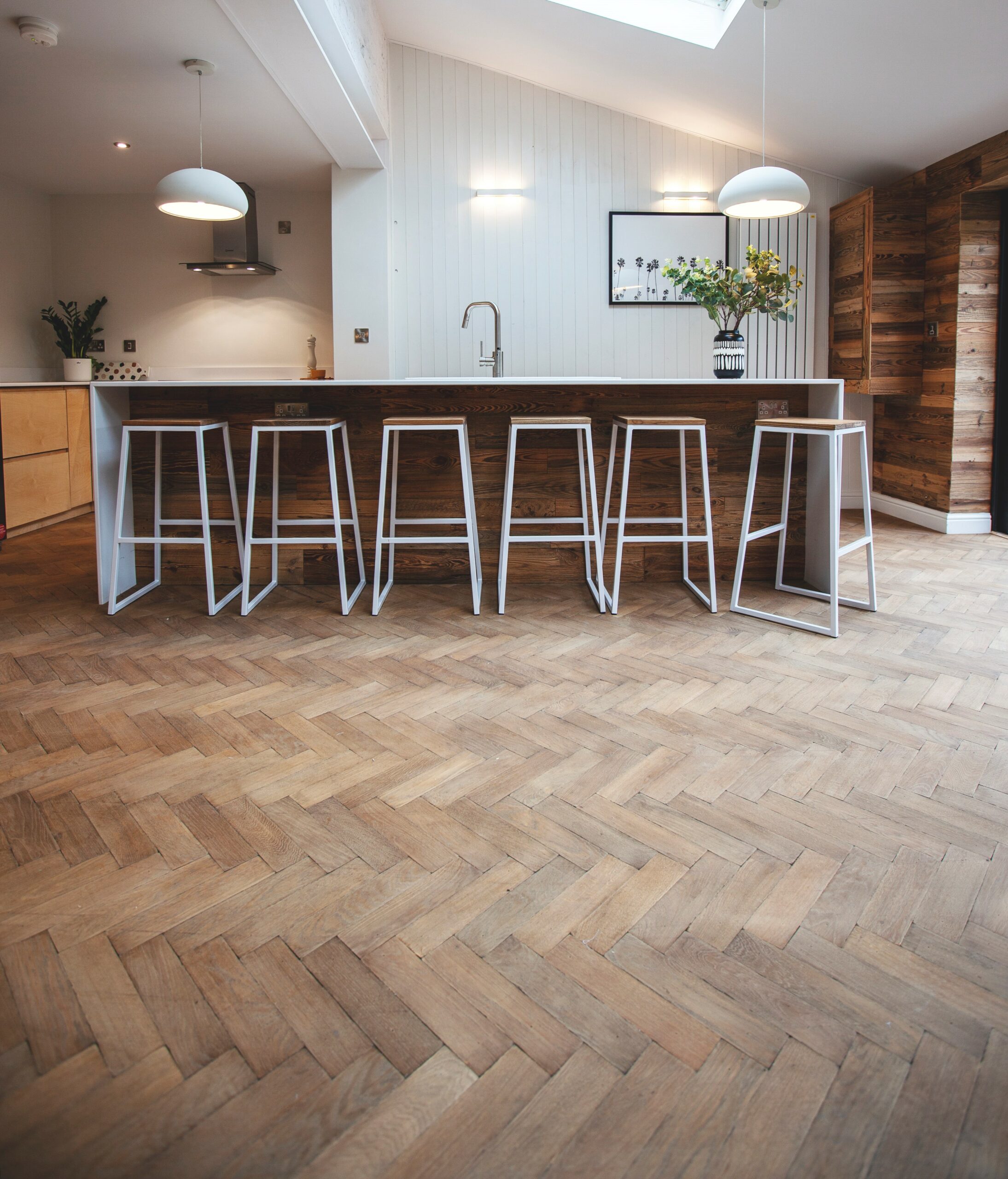
With the influx of all sorts of products trying to mimic the look of real wood floors, solid hardwood and engineered wood flooring remain an undisputed choice for residential and commercial projects alike.
Pattern parquet flooring
Over the years, parquet flooring has proved that classic can also be trendy. Showing an increase of 177.42% in homes around the UK (according to a statistic taken from Country Living), parquet, particularly herringbone and chevron pattern, add both sophisticated and timeless flair. An alternative to straight hardwood installation, longer herringbone and chevron planks are all the rage this season.
Herringbone involves connecting two planks at a 90-degree angle. This flooring style gives any room a focal point, whilst giving an illusion of a larger space. Whether it’s a small hallway or a common area like the kitchen, you can be sure to elevate the overall look and feel of your space into something far from basic.
As far as chevron wood flooring is concerned, it makes it possible to install flooring easier and quicker. It can be laid parallel to the walls or diagonally to create a “V” form. Because this patterned flooring style can create an optical illusion that space is bigger, wider or longer, it has become popular among homeowners with smaller houses, or rooms where a change in proportion is needed to make the room seem more spacious.
Long, wide plank floors
Elongated, wide wood boards are one trend we keep seeing year after year, and this season it’s no different. Their presence lends a casual yet sophisticated design statement wherever they’re installed. Even better, they make compact spaces seem bigger, more open, more cohesive, more expensive and less chaotic.
This is a trend you can expect to maintain its longevity in the marketplace. For this reason, wood flooring manufacturers are trending towards even wider and longer boards that continue to create a stable visual foundation.
High-end market:
custom-made specifications, prime grade, Antique French Oak
While there have been few changes within the timber industry in the last 2-3 years, there has been an incredibly high demand for genuine 18th and 19th century French oak for full home renovations including custom-made stair pieces.
Due to the specialised nature and bespoke requirements for such projects, high-end wood flooring companies normally provide a complete supply and installation services.
With regards to wood grading, the high-end of the market is drawn towards specifying the higher grade of flooring such as Prime Grade and Select Grade, rather than a rustic or character grade. Opting for a cleaner grade of oak means each board is more uniform and grain patterns are generally less varied — and once installed, the overall appearance offers a sense of calmness because there is less visual “noise”.
When selecting either new wood, reclaimed or antique flooring, designers are in the search for new concepts rather than a standard format. Custom-made wood floor requires that you carefully evaluate each room shape, light source, and often times the building’s history.
To get the specifications right, it’s not uncommon for manufacturers to create custom-made pdf templates on-site prior to the production of wood boards in the workshop. With all custom work, it’s best that the manufacturer offer a complete package that includes supply and installation.
Middle market:
natural finishes and natural colours
With regards to the middle and middle-upper market sectors, we have seen a shift in design trends throughout the years. In 2021, there will be an increased demand for environmentally friendly flooring and a higher grade of engineered oak.
For this reason, engineered boards are now FSC certified as standard, and character grade flooring is now a higher grade; which means the boards are considered to be more elegant and there is less floor filler required within each board.
There is an obvious decrease in requests for cool, grey wood floor colours and an increase for warmer grey tones, blended with brown undertones. The current most popular colours include Eames, Highland Manor, Cabin Wood, Regency Grey, Tobacco Cove, Traditional White.
Something of interest in 2021 and beyond, and perhaps a shift that has been in motion the past 6 months is the growing demand for 18th and 19th century French Oak but without the hefty price tag.
Award-winning interiors have in the past few years exhibited such an antique French oak floor, and this influence is seeping its way into the middle market sector — with a great appreciation towards the beauty of such a product and the overall style just not the price tag.
For this reason, there are two alternative products in solid oak, and 2021 sees a high demand for a similar product as an engineered platform that is less expensive than a genuine product.
Reclaimed wood floors
Salvaged from a variety of places including aging barns, wine barrels, old farmhouses, factories and farmhouses, reclaimed wood flooring kills two beds with one stone — it offers something original that’s also environmentally responsible.
This recycled building material carry a distinctive and charming distressed look; and this year, this aesthetic happens to be in style in flooring, wall surfaces, door, and staircase design. Introducing this honest and hard-wearing material that proudly displays the marks it’s acquired during its lifetime adds so much character and warmth that will last a lifetime.
Team reclaimed flooring with tactile elements like wool, leather and rattan to conceive an industrial or country-style scheme, or pair with modern and contemporary smooth, glossy furnishings for a stunning and striking contrast.
Natural, grain wood floors
It seems as though 2021 will see homeowners moving towards natural, grained flooring that add a sense of character and texture to elevate the status of any room decor. To achieve this look, wood boards are finished by scarping a wire brush across the surface, giving them a look that undulates slightly and appears like it was finished by hand with an old-fashioned wood scraper.
The easy-going look is ideal for homeowners seeking a natural appearance that effortlessly complements the now-trending farmhouse style, particularly in kitchens. In addition, it can also add a distinctive touch to upscale contemporary settings, or offer a beautiful contrast to modern décor.
Brown wood tones
Prominent grey and white coloured wood planks have been strong the last 6-7 years; however, as homeowners embrace the light, airy feel in their homes, we’ll see warmer brown tones sneaking in this year. The simplicity and cosiness of brown create a luxury look that still feels timeless.
Light brown is an excellent colour base that offers endless decorating possibilities — effortlessly finding its place in rustic, modern, contemporary, Scandinavian and even traditional interior schemes. What’s more, lighter wood colours tend to hide scuff marks better than darker wood shades.
Onsite wood finishing
Because of the wealth of customisation offered, finishing wood boards in situ is a preferred choice for more and more people. Onsite finishing involves purchasing raw wood flooring and have it sanded, stained, sealed and finished with a protective layer after installation. Most high-end wood flooring companies provide full onsite installation service in order to ensure the best result.
Furthermore, on-site finishing allows you to blend new flooring into existing floors, or finish to your specific taste by taking natural and artificial lighting, furniture and overall décor into consideration. Unlike pre-finished boards, the end result of a site-finished floor is smooth with no obvious lippage between the boards if the subfloor is not completely flat.
Conclusion
Whether you are trying to nail a modern, contemporary, Scandinavian, coastal or even a traditional look, wood flooring offers a stylish, warm, and natural look that lasts a lifetime. With a lot going on in the wood flooring industry, there is plenty of different possibilities that trends this year offer to turn your house into a home.
Advanced manufacturing technics make wood flooring a leading choice, and more species, colours and finishes to choose from mean that some of these trends will likely stick around for years to come….and then some. Investing in brand new high-quality wood flooring can add so much value and timeless style to an interior environment.

Flooring will always remain an essential part of any interior design. When working on the blueprints of any building, every architect or interior designer considers the flooring as one of the significant aspects that he will specify. Flooring is your first physical contact with space. Be it a resident commercial or an industrial building, beauty, elegance, and the overall personality are mainly dependent on it. Then cost-effectiveness of the flooring is another vital feature that everyone considers. Apart from this, you will like to combine grace and grandeur with wear resistance and functionality.
Therefore, it is advisable to take extra time when deciding on the flooring such that you end up picking a beautiful, durable, and cost-effective solution. You have floorings available in many different profile types, finishes, and structures. You all know how disappointing it can be to walk into a well-designed space and to have to walk with extra care as the flooring might not be suitable for formal footwear. Hence, selecting the right type of flooring as per the requirements of the area in question is essential.
There will be a number of things to consider when deciding between the flooring options for your residence, office, or industrial space. It would be best if you choose keeping in mind your décor and style, and knowing the pros and cons of each flooring type will be handy here. Furthermore, it has to match your needs and fit your budget too.
We will floor you with our flooring tips for the different available options. Here is what you need to know about the different flooring alternatives.
Rubber Flooring
Affordable, durable, and easy to install; these rubber flooring tiles work well for a wide variety of purposes and fit every type of environment. In this flooring, you have the option of interlocking tiles and basic rolls. Ideal for high traffic environment, you have a good choice of colors, patterns, and textures. These are available in 12 inch, 23 inch, and 36-inch squares, however, customized sizes you also be available.
Consider rubber flooring a niche, and at times you may not find many variants here. It is a soft underfoot and is ideal for gyms, exercise rooms, and playrooms. Unlike wooden floors, on rubber flooring, heels won’t click, and dropped objects won’t clatter. However, these can get slippery when wet, and if the floor is waxed or polished, things may get a little more uncomfortable.
When it comes to installation, these are on the most sensitive flooring materials, provided you are working with a team. However, it is not suggested for DIYers. The repair and maintenance are hassle-free, and a damp mop is sufficient. You should avoid using harsh detergents as it may affect the color of your flooring. Furthermore, grease and oil may leave an irreparable stain on these.
Pros
- It’s stable and quiet. Therefore, high traffic areas are perfect for this flooring type.
- This flooring is adhesive-free, i.e., you need to use glue to the subfloor in most applications.
- It is a natural material with almost no or little carbon emissions in comparison to other alternatives.
- Rubber flooring is a low maintenance option. The smooth surface of this flooring is easy and quick to clean.
Cons
- The installation is not as easy as the rolls or the tiles; it is going to be heavy. It is never a single person’s job to install rubber flooring.
- It is a costlier option when compared with other flooring types like foam.
- It has limited usability when it comes to installation spaces.
Laminate Flooring
It is a multilayer synthetic flooring product brought together by a sophisticated lamination process. It simulates wood and has a protective layer to it. Look at it as an attractive option that falls well within your budget. This flooring has layers of compressed plywood or fiber, and that makes it durable. In manufacturing it, photo-realism technology is used to create a texture similar to wood, ceramic tile, stone, stained concrete, or others covered in a plastic coating.
The technology used in its manufacturing is so advanced that the laminate version looks identical to the real thing, and that too at a fraction of the cost. This flooring type is ideal for living rooms, studies and playrooms. Some variants come with waterproof care, and you can use those in your kitchens and bathrooms.
The installation of the laminate flooring is easy, and you may think why you hired a professional service to do this. It is a dry installation that requires no adhesives, mortar, or grout.
Pros
- With this flooring, you get a floor that appeals to all aesthetic tastes. It is without any hassle of maintenance and is economical in all aspects as well.
- The installation of this flooring type is effortless and takes little time.
- The surface is long-lasting and durable, and there will be almost no scuffs and scratches.
- You can have a good choice as a wide variety of imitations are available that look as good as natural.
Cons
- Even with the best quality, it is never going to look and feel like a real thing.
- If the installation is not perfect, it will look shabby.
- If the surface gets damaged, it isn’t easy to fix.
- It absorbs moisture, and the damage cannot be repaired.
Wood Flooring
If you are looking for class and elegance, then there is no other alternative that beats wood flooring, the beauty is so fascinating that it is natural to gravitate towards it. The pricing is on a slightly higher side, but that should not deter you. With regular maintenance and cleaning, it can well last for a lifetime and beyond. It is just that the initial investment is on the higher side; the look and durability of this flooring make it up.
These come in two types: one is solid hardwood floors, and the other is engineered wood flooring. The first type is made from solid wood that comes from a single piece of hardwood. Fitting is a tongue and groove process. On the other hand, engineered wood flooring is a comparatively versatile and robust flooring alternative. Each board has three to four layers of wood glued and pressed together to create a plank.
There is a variety when it comes to installation types as well. You have the bare strip, which is narrow tongue and groove boards that are cut in random lengths. Next are the planks that come in various widths as well as random sizes. The third one is the wood tile, which is beautifully patterned and laid in aesthetic patterns in a carpet style.
Another type is the floating floor systems, which have several veneered strips over the tongue and groove backing board. Your wood flooring can come to you in refinished form or unfinished. If unfinished, it is sanded and given a proper finishing before installation. Woods of a different kind comes with a hardness score, which indicates how easily it gets damaged, worn, or dented by the traffic on the floor.
You need to be a little aware of where you can get the wood flooring done in your space. Hallways suit the best and will be a proper display of your décor and taste. You can install it anywhere that is not exposed to water or humidity. The stairs can be one place where you will have difficulty in installation and maintenance.
Pros
- The benefits of wood flooring of all types are numerous. The biggest one is its long-lasting beauty. It brings enormous value to your property.
- You can get it refinished whenever you feel like getting it done. You can get it done even after years of installation. The original look can be easily restored, erasing all the scrapes and scratches.
- This flooring type can well outlive all other flooring options.
Cons
- You need to take care of moisture and water seepages on this flooring.
- The initial costs are on the higher side.
Vinyl Flooring
This flooring has been a popular option since the 1950s. It is best when you are looking for low cost and durability. Being water-resistant, you can use it for kitchens and bathrooms as well. Use it as a quick fix answer to those old floors or sensitive carpets; what’s more, it will be an alternative that is easy on your pocket as well. This flooring option is flexible, resilient, and has just the right hardness.
Vinyl flooring has a wear layer on the top, and it works well as a protective coating. It gives you the choice of getting the installation done directly on your existing floor without the hassle of dismantling it. The durability and versatility feature makes it the right choice for both commercial and home interiors. Be it living rooms, bedrooms, bathrooms, and kitchens, and these complement every space.
Pros
- No other type beats it in durability, and it can bear ordinary wear and tear with ease.
- An economical choice, it is no doubt the preferred choice for many homeowners.
- It has a fast installation, and there are no complicated procedures involved.
- It comes in a variety of design options to fit any design style. Moreover, it is easy to maintain and is slip-resistant.
Cons
- These floorings are just not meant for heavy loads making it unsuitable for industrial spaces.
- Sharp objects can easily wear it down.
- The colors tend to fade over time when exposed to sunlight is there. Therefore, it won’t work in an outdoor space.
Bamboo Flooring
This flooring has emerged as one of the favorite segments in the flooring industry for the last decade. The main reason being it is economical and high on durability when compared to other wood options. Many of us may not know that bamboo is a grass and not a wood. It is, in fact, the biggest grass in the world and has a dozen of varieties. The ones used for flooring is called the Moso bamboo that comes from China and other parts of Asia.
It makes an attractive flooring option that is entirely made of natural material. The good thing is that it will add immense value to your real estate property. In looks and functionality, the bamboo flooring remains much similar to its wood counterpart. It is slightly more water-resistant; however, it is prone to scratches and cracks, and higher humidity levels can be harmful to this flooring.
Bamboo is light in color, and to bring a dark shade to it, and it is carbonized. In the process, it tends to get softer than natural bamboo. Bamboo flooring is engineered by slicing and shredding the strands of the grass. Once done, it is pressed together with adhesives and heat to form flooring boards.
Pros
- Bamboo flooring is a natural and renewable material. It is entirely environmentally friendly.
- The maintenance of these floorings is easy and quick.
- Even after years of installation, it can be refinished, and it will again look new as ever.
- It will significantly increase the financial worth of your real estate.
Cons
- Can easily get scratches and cracks
- There are several harmful toxins present in the adhesives used to make the flooring.
Carpet Flooring
Carpets have a striking uniqueness that they bring to the interiors of the space. It is fantastic in many ways and makes a tremendous addition to your home. However, if you were too cautious, it would be best to know when and where to use the carpet to make all the difference. These will be best when added to the living rooms, dining rooms, bedrooms, and playrooms.
For decades it has remained as the most popular flooring choice across all the cultures. Carpet flooring has its own set of advantages provided you get it right and provide regular maintenance. It makes your space comfortable and cozy and transforms the whole look and feel of the area. It comes in an exciting range of styles, textures, and designs. It offers homogeneous versatility wherever it gets installed. You can lay it anywhere; it will leave everyone impressed.
Wall to wall carpeting completes the looks of the room and enhances the entire décor. When you cover the floor with carpets, your house looks more inviting and grand for the visitors. However, it would help if you through these pros and cons briefly.
Pros
- It enhances the décor of your house and is ideal for giving your home a much-needed makeover.
- It gives warmth in winters and remains soft for your feet around the year.
- Carpet flooring works as a good sound insulator.
Cons
- It may not be as hygienic as other flooring options. It can easily become a breeding place for dust mites.
- It retains all the moisture, stains, and odors.
- Overall this flooring type requires high and regular maintenance.
Epoxy Flooring
It can be used to give a new and distinct look to kitchens, bathrooms, floors, patios, terraces, and even basement floors. For years, it has been a popular flooring style for workshops and garages. It can easily bear grease, dirt, oil, scratches, and other types of wear and tear typical to an industrial environment. Overall, consider it economical, durable, and attractive flooring solutions for commercial and residential applications.
However, this flooring will not work if the environment has dampness or has a high level of UV rays exposure regularly. Moreover, the installation of this low maintenance and durable flooring option is challenging. However, the advantages of the epoxy flooring option outweigh the drawbacks associated with it.
It is water-resistant to a higher extent, can bear all stains, and withstand all sorts of chemicals. One can clean these quickly with a moist mop, and if you add a mild cleaning solution, it will be better. This low maintenance flooring option works well for showrooms, warehouses as well as residential homes.
Here are the most important pros and cons of epoxy flooring that you should consider.
Pros
- It is durable and long-lasting in all kinds of environments.
- Epoxy flooring is one of the most hygienic flooring options available.
- It remains one of the most economical flooring options for you in the present day.
Cons
- Heavy objects on the surface can cause the epoxy coating to chip over time.
- It can be excessively slippery, especially in moist environments.
The Bottom Line
The flooring options listed in the article are the most popular choices these days; however, you have to choose only one for your space. At one end, you will like your flooring to look unique and alluring, and on the other hand, it should fit your budget as well. In such a situation, it is always best to prefer an option that has grace, attractiveness, easy maintenance and lasts for a long time. Our vote obviously goes for wood flooring.
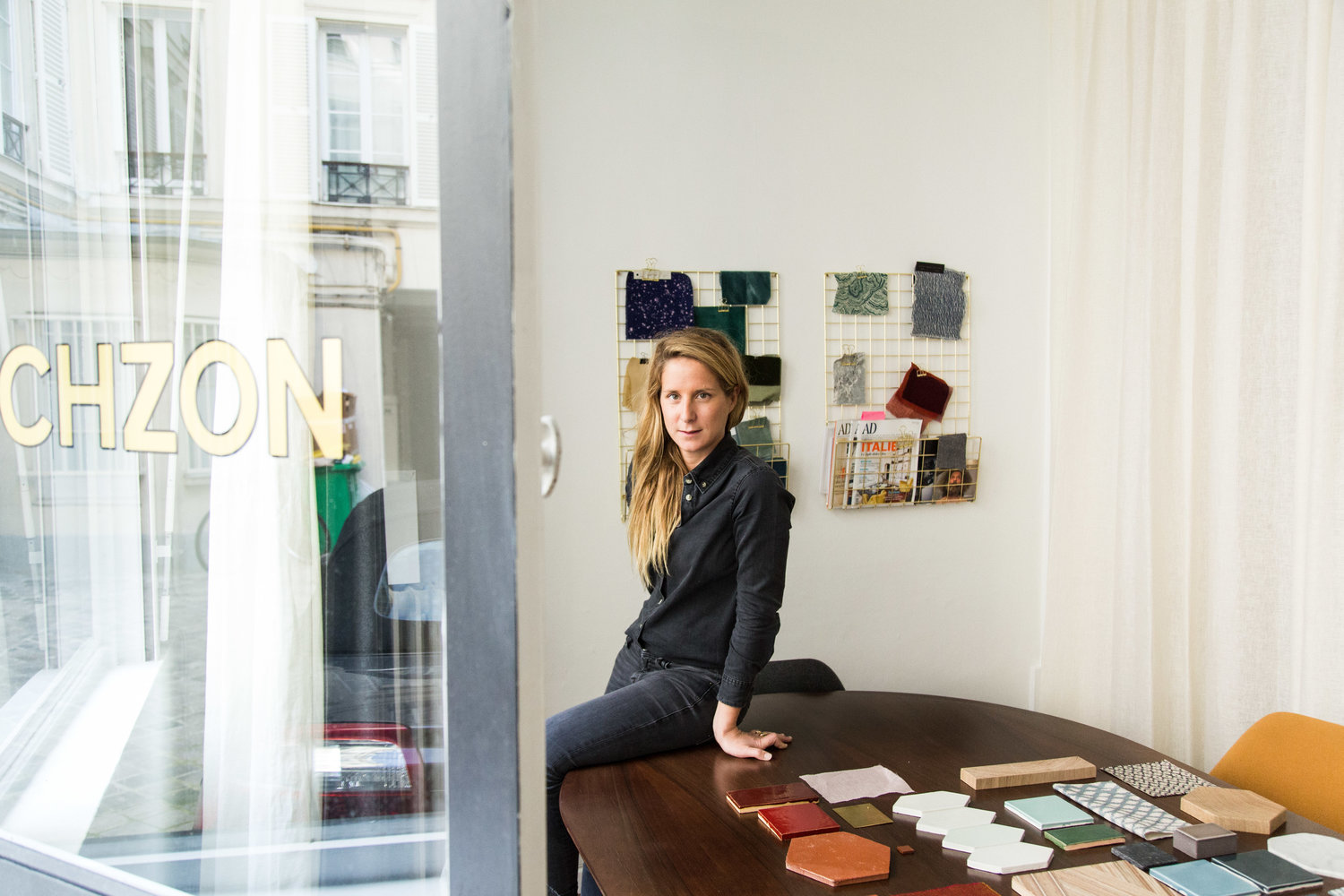
Dorothée Meilichzon has gained a reputation in the French capital’s hospitality industry — embracing rich, bold textures, colours, and prints in the rooms she designs. A true perfectionist with a researcher’s mind, at just 27 she decided to set up her Paris-based studio, CHZON — now a global agency specialising in hotel, bar, and restaurant design projects.
Since then, her name is linked to some of France buzzworthy addresses, including Grand Pigalle Hotel, Hotel Panache, Hotel Paradis, Hôtel des Grands Boulevards, and so many more must-see destinations.
The award-winning Parisian designer is also responsible for conceiving London’s playful yet sophisticated Henrietta Hotel — as well as a list of exquisite projects in Ibiza, Basel, Venice, Cannes, Monaco, and New York.
Her intentions for the spaces she design is finding the right intrepid mix of textures, patterns and a pastiche of shapes in a way that creates a warm and unpretentious atmosphere. In fact, these peculiar details find their way onto her floors, walls and furnishings.
Rather than subscribing only to the traditional French aesthetic, Meilichzon designs exude genuine personality and an incredibly welcoming appeal that invites people to exchange, share, and make discoveries.
Each project she touches ensure that the interior exist in harmony with its environment. This, for example, is evident in the Hotel des Grands Boulevards — set in an 18th century building erected during the French Revolution years. The interior presents a rustic-chic style, featuring whitewashed walls, reclaimed timber beams and Versailles parquet flooring — a clever nod to the Petit Trianon château at Versailles.
For a traveller that’s seeking distinctive Parisian experience, Hotel Bachaumont is a worthy choice that will live up to your expectations. And if you’re a lover of glam retro, you’ll truly be mesmerised by its individual architectural characteristics.
The hotel’s lounge boasts a colour scheme of navy blue, beige and white, bevelled mirrors, fabric chairs in playful prints, backgammon-inspired table-tops, handsome detailing of dark wood and black marble at the bar, and medium-light brown floorboards.
The hotels brightly lit 49 rooms, four of which are apartment-sized suites, house a palette of deep blues, teals and greys, large beds with Pierre Frey fabric headboards, slender pieces made out of marble and wood, Stilnovo brass-accented globe lights and dark herringbone wood flooring to balance out the aesthetics.
Meilichzon is a designer who never repeats herself, perhaps this is what differentiates each of her projects. Her works offer an individual spirit and a unique adventure. On the island of Menorca, Menorca Experimental Hotel sits on 30 hectares of green, tranquil land, within a revamped 19th century country estate.
The 43-room agritourism surrounded by pine groves, juniper shrubs and wildflowers offer an all-encompassing experience. The retreat maintains as many of its remaining original architectural structure: exposed wood beams, roof tiles and timber shutters.
Custom furniture built by local artisans, rough-hewn local timber floorboards, glazed terracotta tiles, waxed concrete, and a palette of pastels and rustic tones are just the few characteristic features that accent the space throughout.
What’s truly impressive is how historic buildings are eclectically transposed into a perfect blend of contemporary elegance and understated bohemian aesthetic. Embracing existing, original elements seem to be a common thread. Materials from nature, particularly wood and stone are favoured in most of her hospitality projects.
A simple understanding of how we connect to the materials that we employ is crucial when designing restorative environments meant for a positive dining experience.
The growing interest associated with the use of wood lies in how naturally habitable the interior feels thereafter. Wood feels instantly familiar and can lend a sense of warm ambience to any built environment. In addition, it can bring an abundance of texture and character with weathered and distressed patina, whilst also delivering a more chic aesthetic.
Conclusion
Dorothée Meilichzon execute interiors with dramatic character — infusing classic, contemporary and retro elements, with a slight chic Parisian aesthetic. Each of her projects are different, offering a unique experience by bringing in a burst of excitement and vibrancy through contrasting colours, patterns, and playful shapes.
The designer’s sophisticated design sensibility is highlighted through the way she utilised different materials to create a harmonious atmosphere — for instance, the way she teams natural wood and stone to create a welcoming and memorable experience in each room. This mix-match of materials encapsulates the theatricality and status of the interior environment, resulting in a distinct visual identity.

Formafantasma, an Italian design duo based in Amsterdam presented an ongoing investigation that plunges deep into the evolution of the timber industry, commissioned by London’s Serpentine Sackler Gallery.
Curated by Rebecca Lewin, the exhibition presented work from the Cambio project, drawing from disciplines of science, conservation, engineering and policymaking — focusing on the governance of the extraction of timber from forests, its expansion across the world and the negative impact it has had on the planet’s biosphere since the 19th century.
Designers Andrea Trimarchi and Simone Farresin, who make up the Formafantasma team, seek to highlight how design should, and can, shape a better and more sustainable future — and raises awareness around climate change and ecological issues.
Through their holistic approach, the duo reaches back into the history of extraction, production and distribution of particular materials used by humans to find the patterns of supply chains, as well as looking at the future of that material’s survival in relation to human consumption.
Cambio (from the medieval Latin cambium, meaning “exchange” or “change”) references the cambial layer, a cellular membrane that runs around tree trunks. The function of which is to produce wood on the inside (a record of the tree’s past) and the bark on the outside (which enables it to keep grow).
The exhibition’s layout followed a concentric structure, much like the rings of a tree, to bring together an analysis-based series of films, objects, artefacts and samples aimed to poke viewers to reevaluate their relationship with trees.
The duo explained, “The exhibition aims to put into question the role that design can play in translating emerging environmental awareness into informed, collaborative responses.”
In response to interviews with specialists along with research data, Formafantasma created two films which were showcased in the central spaces of the Serpentine Sackler Gallery. Highlighted in the same area were a series of case studies that educated visitors about wood sourcing and usage — offering a better understanding of the philosophy and politics of plants.
Meanwhile, visitors were allowed to enjoy displayed objects from historical collections of wood samples and contemporary products in the north gallery, all of which were sourced from the Economic Botany Collection in Kew Gardens and V&A’s storage spaces.
Interestingly, the earliest samples of rare hardwoods from Kew were first displayed in The Great Exhibition of 1851, the purpose of which was to incite desire and inspire new products to be made from rare and — probably now — endangered tree species.
The newest display of furniture and seating comes from the Formafantasma collection, all of which are crafted from a single tree blown over in a storm in northern Italy in 2018.
In the south gallery, the exhibition opened with two wooden pieces that draw attention to the physicality of wood and its possible uses, with a two-screen projection and two sections of a tree trunk. This took place in an ambience that evokes the wet earth and flora of a forest, developed by Norwegian smell researcher and artist Sissel Tolaas.
The east section of the exhibition was home to forensic research undertaken by Formafantasma together with several scientific institutions. Here, viewers got the chance to learn more about wood as a biological archive that stores data and narratives within its tissues, even while it undergoes carving, pulping (for paper) or fire (for charcoal).
Lastly, a combination of images, text and film found in the west gallery “takes a view of forestry that moves beyond the extraction of resources and attempts to understand the complex ecosystems that forested regions contain.”
The Italian design duo explained, “Cambio is an attempt to expand our understanding of what design can be, going beyond the finished object in order to include its disciplinary boundaries; forestry techniques and timber legislations then become tools for designing a better future for our forests; scientific knowledge goes hand in hand with environmental activism in fighting illegal logging, and the equilibrium of trans-national geopolitics is redefined in the struggle between conservation and consumption.”
Conclusion
As designers, the Amsterdam-based team brings awareness to the depletion of natural resources a lot closer to home. Wood, being a natural material used for everyday objects and yet taken for granted, makes up one the largest industries in the world.
A series of films, workshops, talks and samples displayed during the exhibition will hopefully broaden and deepen debates surrounding sustainability. The consistent devotion put forward by Formafantasma to investigate and reveal the scale of the problem surrounding global wood consumption and how we can improve the timber industry is to be applauded.

As one of the great designers and craftsmen of the twentieth century, George Nakashima is noted for his fundamental belief that every tree deserved a second chance at life.
Since inception, much of his craftmanship had always maintained a sacred relationship with trees, resulting in the production of some of the finest wood furniture of his time. His designs, which often incorporated slabs of wood from his own property and local areas, is highly recognizable and appreciated.
Born in 1905 in Spokane, Washington, to parents who recently immigrated from Japan — Nakashima’s hiking and camping trips as a young Eagle Scout instilled in him a love of trees and nature — a love that, undoubtedly, became a part of his life.
In school at the University of Washington, he first studied forestry and after two years switched to architecture. He went on to earn a masters degree in architecture from MIT.
Upon graduating, he moved to Tokyo in 1934 and started work at an architecture firm of Antonin Raymond, who combined Japanese building techniques with innovative Western practices. There, he was part of a team that designed interiors for the firm’s various projects.
He was later sent to India in 1939 to oversee the country’s first reinforced concrete structures. During his stay, he became a follower of an ashram’s guru Sri Aurobindo’s spiritual teachings.
Upon his return to the United States, he was disappointed by the architectural world and decided to pursue a new career as a furniture designer — a new chapter in his life that will have a lasting impact.
With his first workshop established in 1943, in New Hope, Nakashima’s discipleship in the ashram ignited his innate skills and aesthetic to create a style of functional beauty.
His earliest works showcased the wood’s purity and natural character, particularly its gnarled imperfections. His furniture making process rarely used the free-edge technique. Rather, he began producing custom-made pieces that were free of ornamentation, and focused on simple lines in order to show off the natural beauty and contour of each wood plank.
Within two years of setting up his studio, he entered into a working relationship with manufacturer Knoll, which brought his creations to a wider audience and into contact with other like-minded designers. He produced two original furniture pieces that served as early examples for Knoll, which began production in 1949 — the Splay-leg Table and Straight Chair.
Throughout the years working with large-scale retailers, his name became more established and respected as a maker of fine wood furniture.
George Nakashima’s elegant and thought-provoking furniture collection continues to enthral collectors. His work graces the homes of affluent individuals seeking something distinctive, including Steven Spielberg, Brad Pitt, Julianne Moore and many others. His most popular pieces: A Nakashima Conoid Bench, Conoid Chair, Lounge Chair and Minguren II Coffee Table are preserved for history in the Smithsonian.
Nakashima was mindful of choosing his clients — he found friendship with each one them to be vital and instrumental to the development of each final piece. The more he resonated with a client, the more likely it was that they were given top priority of the finest lumber, such as exotic varieties of Rosewood or English Oak.
While most woodworkers preferred furniture making with smooth and straight-edged lumber from the inner parts of a tree, he took pleasure in finding an ideal use for every part of the tree. Largely influenced by the Japanese belief of wabi-sabi, Nakashima revered in seeking beauty in imperfection — and had an uncanny ability and an almost psychic connection to the wood.
In his memoir The Soul of a Tree: A Master Woodworker’s Reflections, Nakashima wrote: “There is drama in the opening of a log to uncover for the first time the beauty in the bole, or trunk, of a tree hidden for centuries, waiting to be given this second life.”
In making furniture from slabs of wood, instead of hiding deep cracks and large gabs, he utilised the butterfly joint to hold pieces together. Although the butterfly joint was used by others before him, it became part of his craftmanship, and many referred to it as the Nakashima’s joint.
The final touches included using oil finish instead of veneers or lacquers so as to highlight the natural grain of the wood.
His craftsmanship captivates people “because it is different. My father integrated life and work by not tying into the big-corporation mindset of mass production and making money. To him, it was more important to make beautiful furniture; money would come later. He combined utilitarianism with beauty,” his daughter Mira Nakashima recounted.
“Dad always felt he was giving trees new life, and life continues. Not everybody understands this; it’s not for everyone, but if you are sensitive to it, you will sense life in each item we make. People realize this when they have sold their Nakashimas. It’s like selling a part of themselves.”
After his passing in 1990, Mira took over as the Creative Director of Nakashima Woodworkers — producing her father’s classic pieces that pay tribute to his legacy while simultaneously developing her own novel ones. She has also written a book about her father called “Nature, Form and Spirit: The Life and Legacy of George Nakashima.”
Of her father’s influence, she said, “Today, there is a strong legacy that lives all over the world in using the natural form of wood. The architecture he created on the property here (in Bucks County, PA) is now a Historic National Landmark. Another landmark in his life was to leave the camp in the desert and start a legacy here in New Hope.”
Conclusion
George Nakashima initially wanted to be an architect but instead became one of the world’s renowned woodworkers… shaping each piece of wood and fashioning it into a useful object for human consumption. In his eyes, the tree was always where everything began and it was up to the tree to dictate the form to follow.



